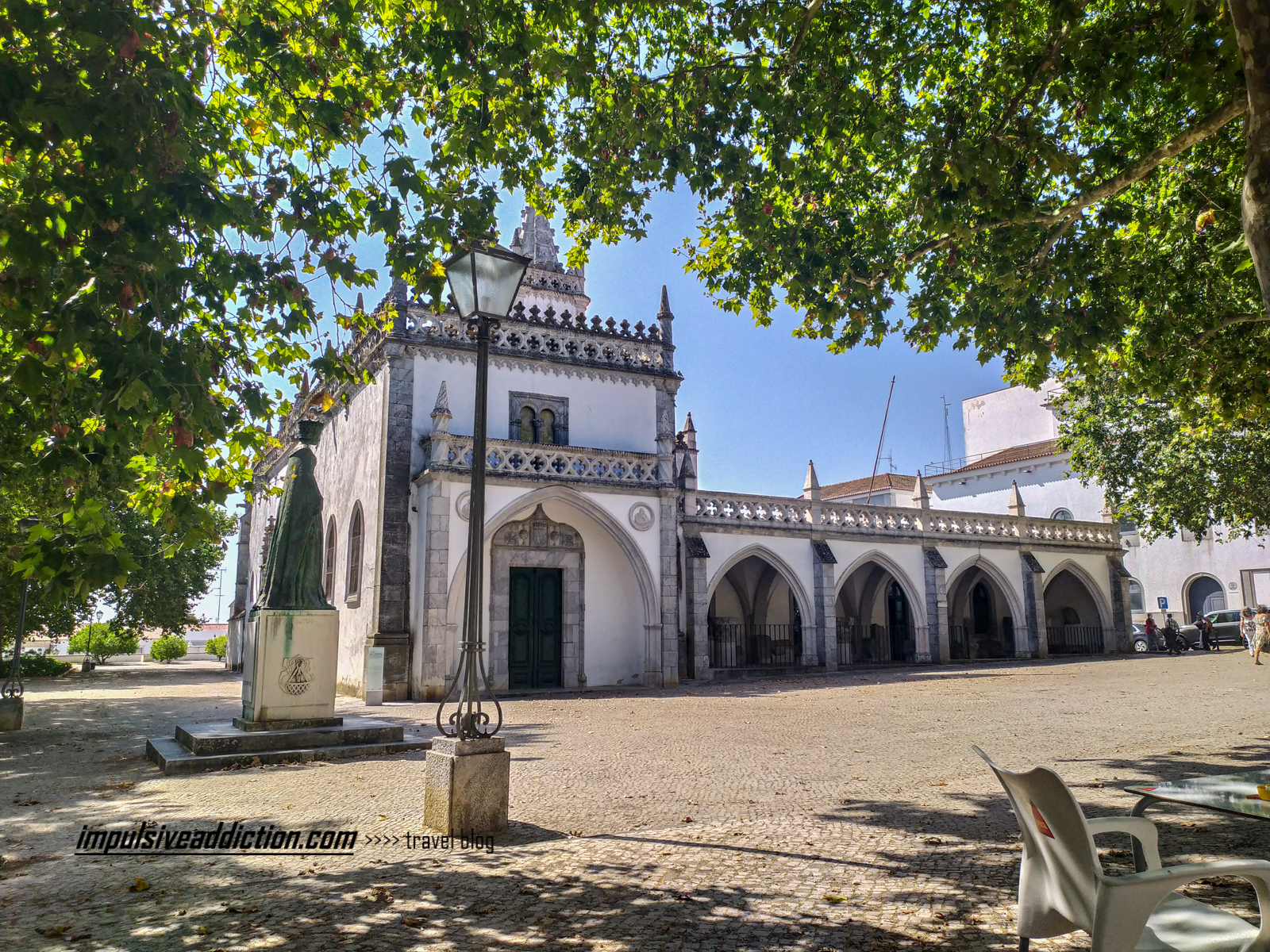Did you know that when you visit Beja you have the chance to see the tallest keep in Portugal, which is also among the most beautiful?
I loved visiting every nook and cranny of Beja, from the monumental Church of Misericórdia to the details of the city’s Jewish quarter, and of course the fabulous Convent of Conceição, where the Museum of Queen Leonor is now based.
And although the city of Beja isn’t lucky enough to be bathed by a river, did you know that it has an excellent river beach just a few kilometers away? It’s called Five Kings River Beach, and it’s top notch!
Want to know everything to visit, see and do in Beja? Below you’ll find an itinerary and useful information on all the city’s main tourist attractions.
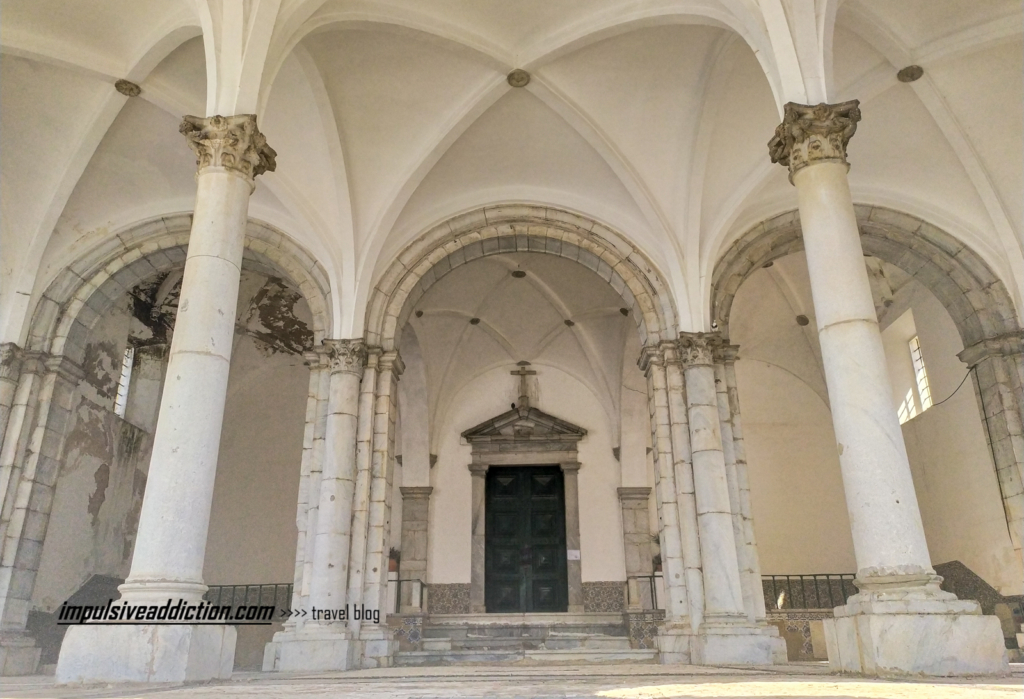
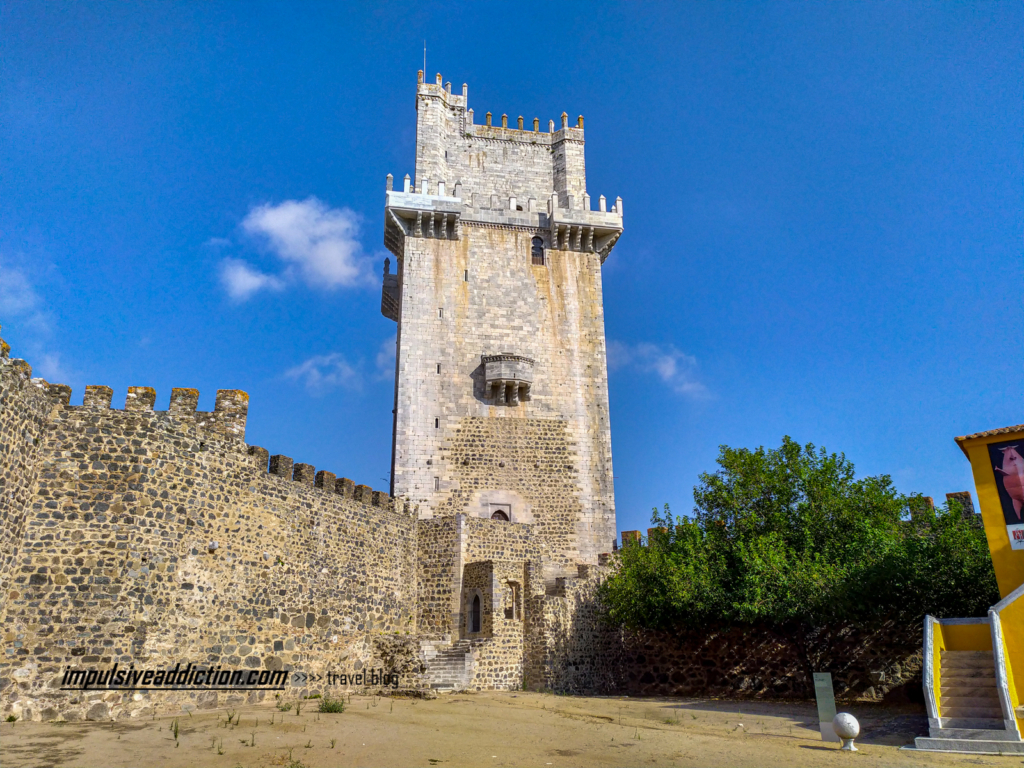
Where is Beja located, in Portugal?
Beja is located in the lower Alentejo. It’s the capital of that region.
To the north are the districts of Évora and Setúbal, and to the south is the fabulous Algarve. But this article is about the municipality of Beja, so you’ll find this Alentejo county between:
- Ferreira do Alentejo, Aljustrel and Castro Verde (municipalities along National Road 2).
- Mértola and Serpa (municipalities bordering River Guadiana).
- And finally, Vidigueira, Cuba and Alvito.
MORE ARTICLES FROM ALENTEJO AND ALGARVE: - Best Costa da Caparica beaches - Best beaches in Setúbal - Best Beaches in Sesimbra - Visit Ribeiro do Cavalo Beach - Best beaches in Tróia, Comporta and Melides - Best Beaches in Alentejo and Vicentine Coast - Things to do in Odemira and Vila Nova de Milfontes - Things to do in Marvão - Things to do in Elvas - Things to do in Estremoz - Things to do in Vila Viçosa - Things to do in Monsaraz & Alqueva Lake - Things to do in Porto Covo and Sines - Things to do in Arraiolos - Best Things to do in Évora and surroundings - Things to do in Mértola and Guadiana Valley - Algarve Road Trip Itinerary - Best Beaches in Algarve - Things to do in Sagres - Things to do in Lagos - Best Beaches in Lagos - Things to do in Portimão - Things to do in Armação de Pêra and Silves - The Seven Hanging Valleys Trail - Best Beaches in Carvoeiro - Best Beaches in Albufeira - Things to do in Vilamoura and Quarteira - Things to do in Faro - Things to do in Tavira - Things to do in Olhão - Things to do in Monte Gordo
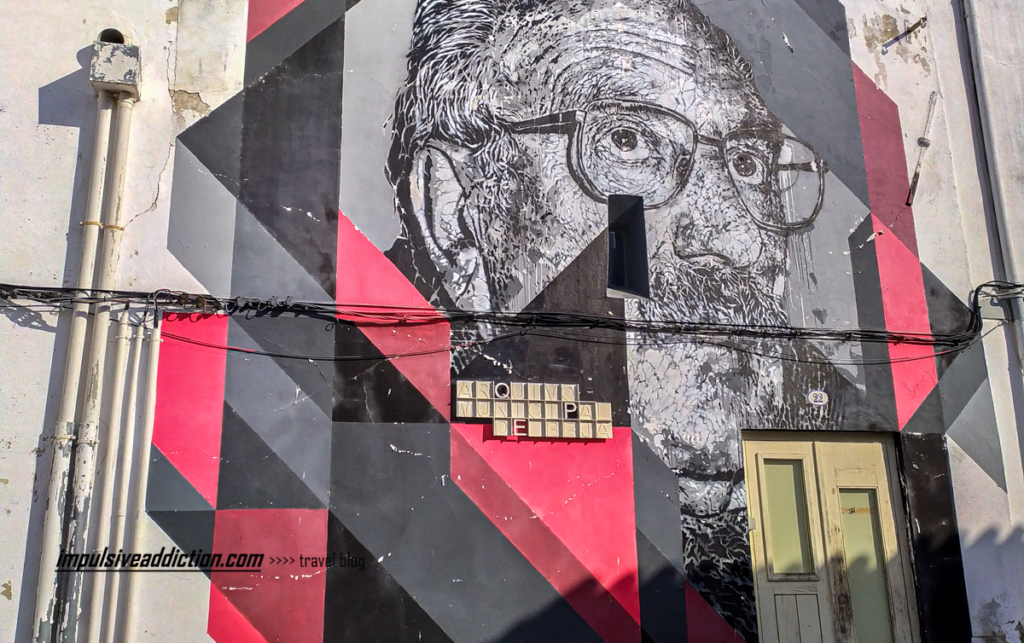
How to get to Beja?
Beja is easy to reach from anywhere in the country – after all, it is one of the Alentejo’s capitals. For example, it’s just a short detour from National Road 2, and there are direct buses departing from Lisbon.
However, Alentejo is a region ideal for road trips, so my recommendation is that you rent a car, if you don’t have your own. Do it with Discover Cars, which allows you to compare several rental companies before finding the best deal! A car will give you a lot of flexibility when traveling in Alentejo.
When to visit Beja?
Beja has several annual events that you can enjoy. I think the best time is between May and June, when Beja Romana event, the B Festival and the International Comic Strip Festival take place. And it’ll be warm enough for a dip in the five kings river beach.
Gastronomy and Restaurants in Beja
In Beja you’ll find the best that Lower Alentejo has to offer. When it comes to desserts and typical sweets, try queijadas de requeijão and trouxas-de-ovos.
For your main course, enjoy a good Açorda Alentejana, Lamb Stew or just migas with black pork meat.
Restaurant suggestions: Dom Dinis | Toi Farois | Adega Típica
Accommodation tips to visit Beja
| Accommodation | Score | Location |
|---|---|---|
| Convento de Beja | 9.0 | Beja |
| Império Romano Guest House | 9.4 | Beja |
| Guest House Stories | 8.8 | Beja |
Map | Things to do in Beja
Things to do in Beja – 1 day Itinerary
I visited Beja in one morning, very hurriedly as I wanted to get back to the road to Algarve. It is possible to visit almost everything in one morning, but but of course 1 day is a must to explore everything in more detail, relax on a terrace, meet the locals, and even take a dip in Beja’s river beach. Ideally, you should stay in Beja for 2 days.
1. Visit Beja’s Republic Square, pillory and Misericórdia Church
Republic Square is the starting point I recommend when visiting the capital of Lower Alentejo. In many other Portuguese cities, the Republic Square is the heart of the city, but not so much here, at least in my opinion, even though it is home to Beja’s town hall.
What I most appreciated in this square, and I recommend you take a closer look at, were the Pillory of Beja, the Misericórdia Church and the arcaded building that stands out for its tiles and yellow outlines. The church of Misericórdia has a monumental entrance.
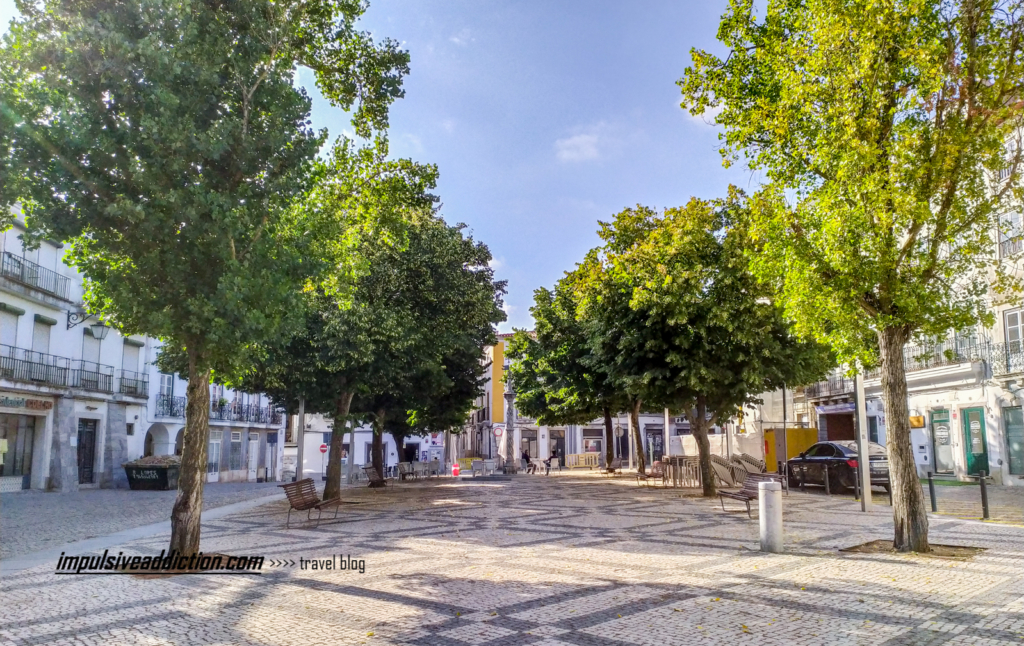
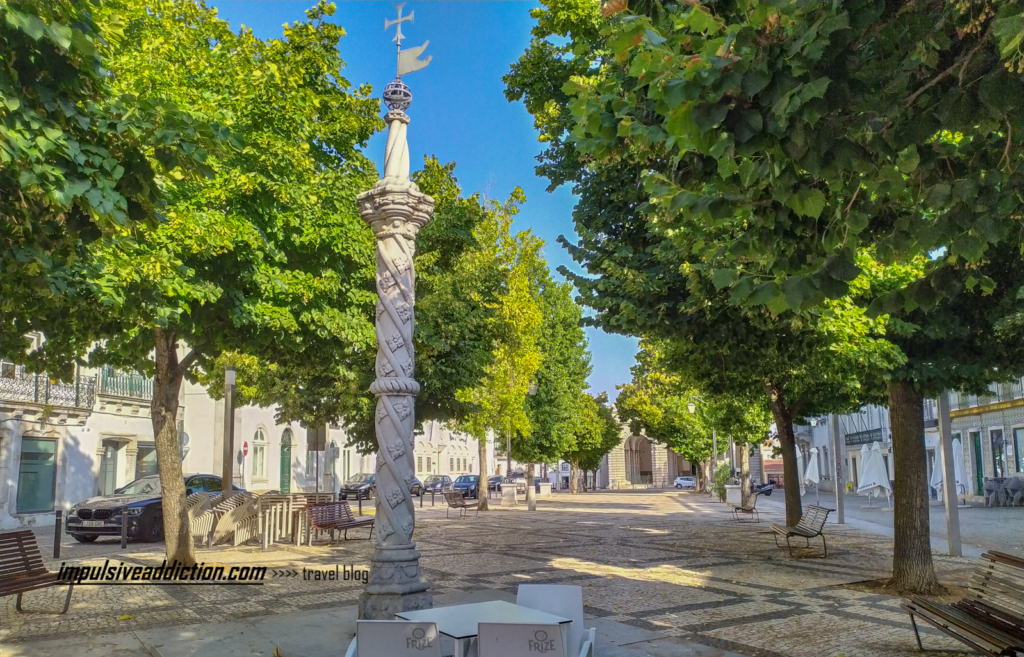
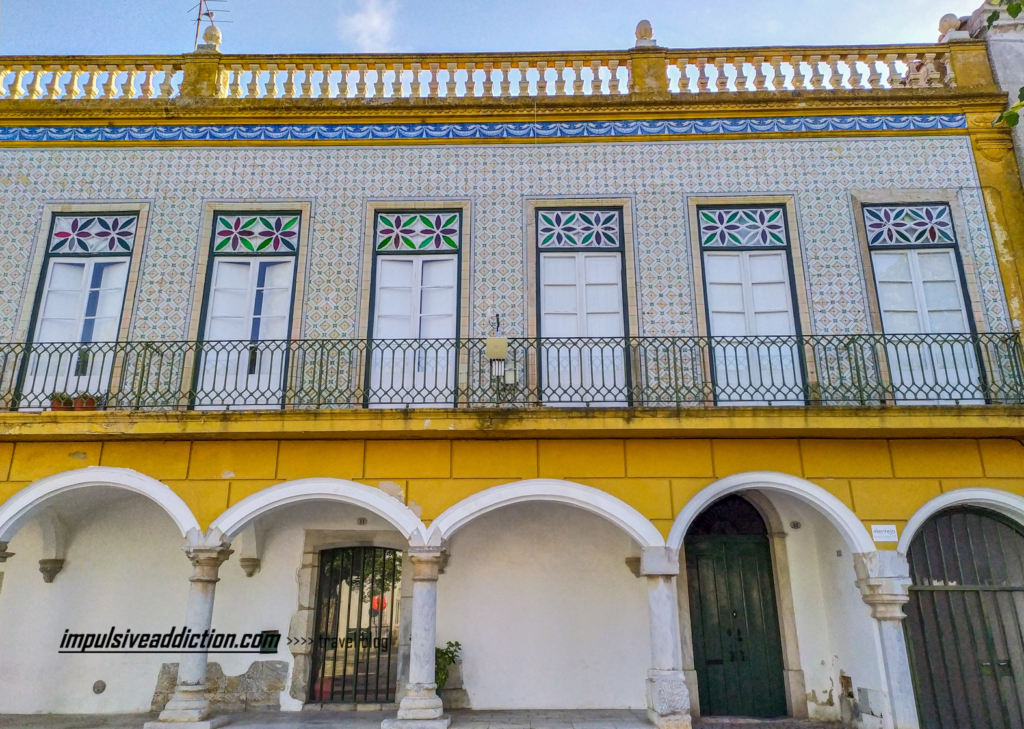
2. Discover the archaeological remains of Rua da Moeda and the Manueline Window
Republic Square is connected to several of Beja’s streets, and before you head off to the next must-see destination in the city, don’t forget the ones I’ve listed below:
- Rua da Moeda (where you’ll find archaeological remains);
- Rua Dr. Afonso Costa (where you’ll find a beautiful Manueline window).
3. Visit the area around Beja’s Prazeres Arch
The Prazeres Arch is also not far from the Republic Square and Church of Misericórdia. Next to it you’ll find the Church of Nossa Senhora dos Prazeres, the Chapel of the Holy Spirit, and the Episcopal Museum of Beja. Cross the arch to visit Avenue Miguel Fernandes, but then return to Rua Dom Manuel I in the direction of the castle.
You’ll find some interesting urban art in this part of town, like the one below. As you walk along Rua Dom Manuel I, you’ll pass Santa Casa da Misericórdia, which houses Beja Pharmacy Museum.
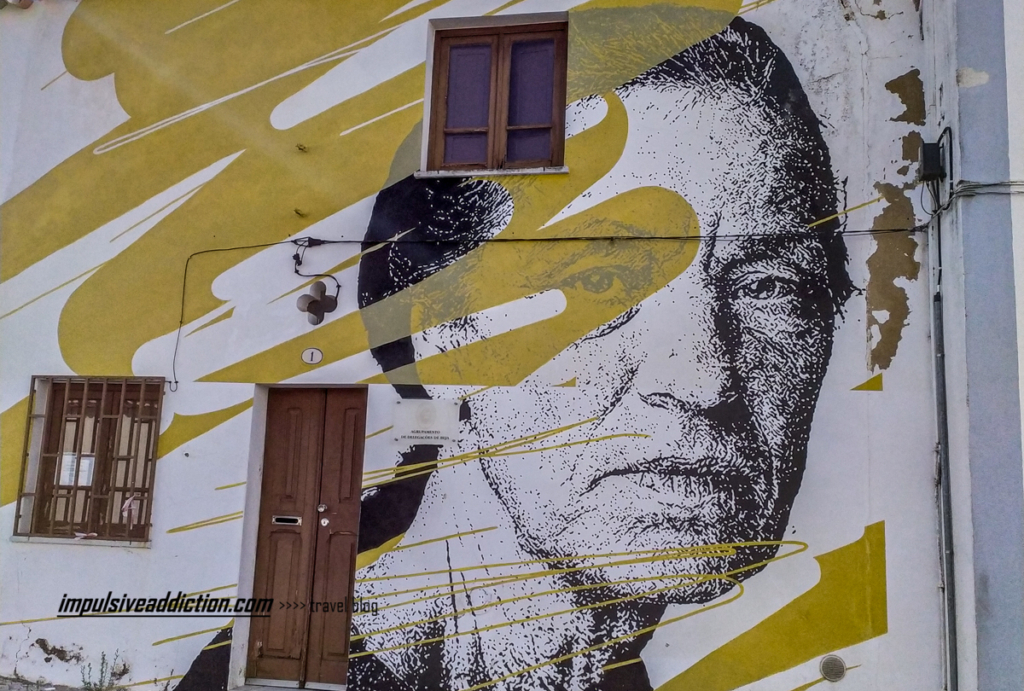
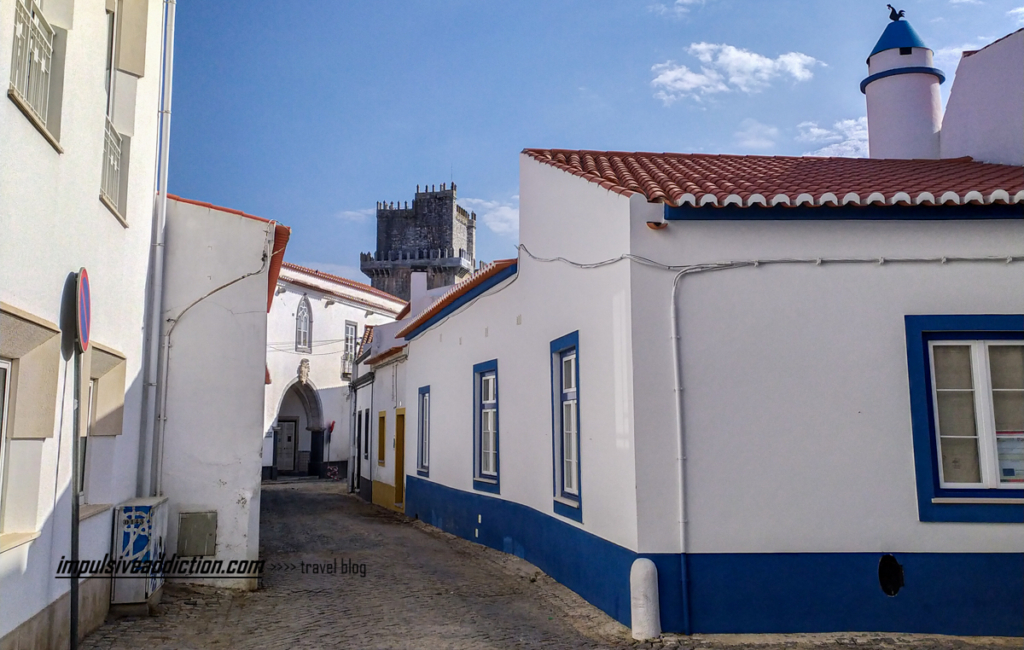
4. Visit the Church of Santo Amaro
Before climbing the extraordinary Keep of Beja Castle, I recommend a visit to the Church of Santo Amaro and the Visigothic section of Beja Regional Museum, or even a walk (optional) to the Chapel of Santo André.
5. Visit Beja Castle and the Keep
The Castle Keep is the tourist attraction not to be missed when visiting Beja, being the highest in Portugal. In the Castle grounds you can visit Jorge Vieira Museum, and don’t forget to stroll through the gardens surrounding the walls to admire what remains of the old Évora Gates.
Entry to the castle grounds is free, as is climbing the walls. You only pay for access to the museum and keep.
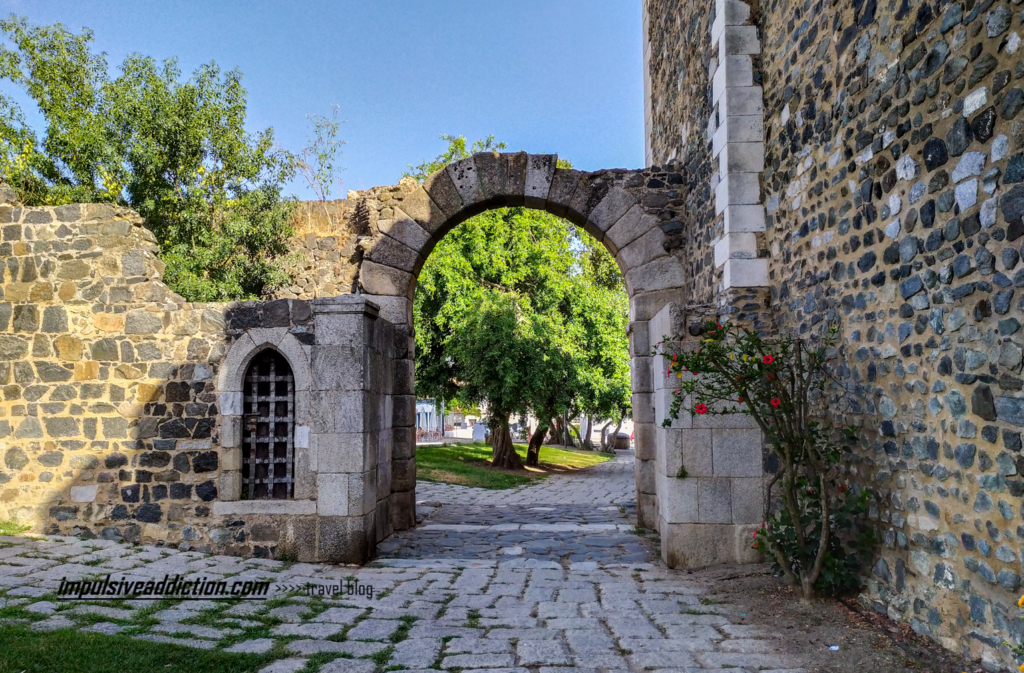
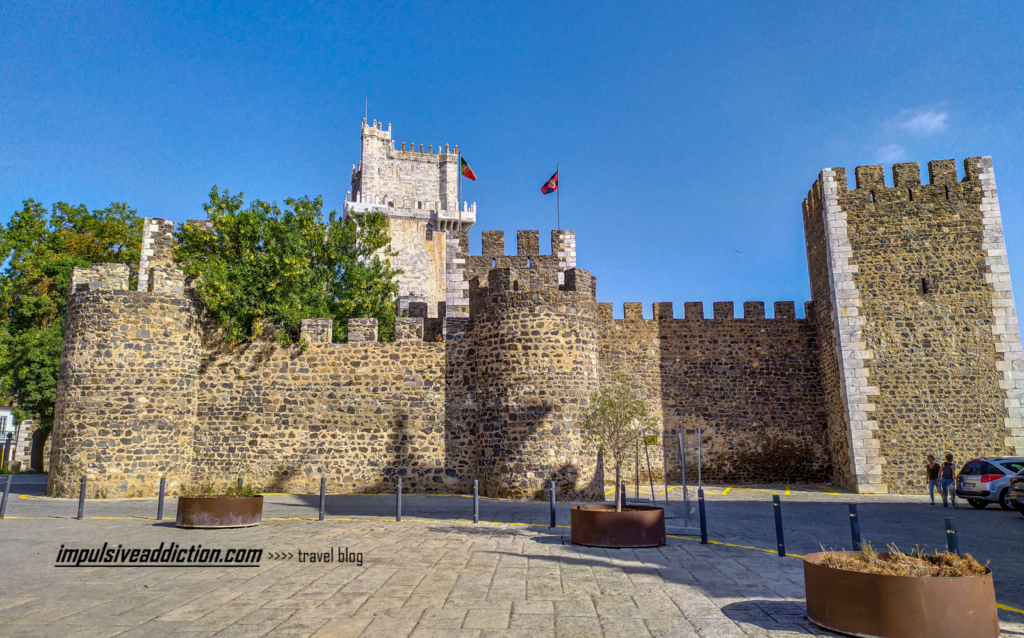
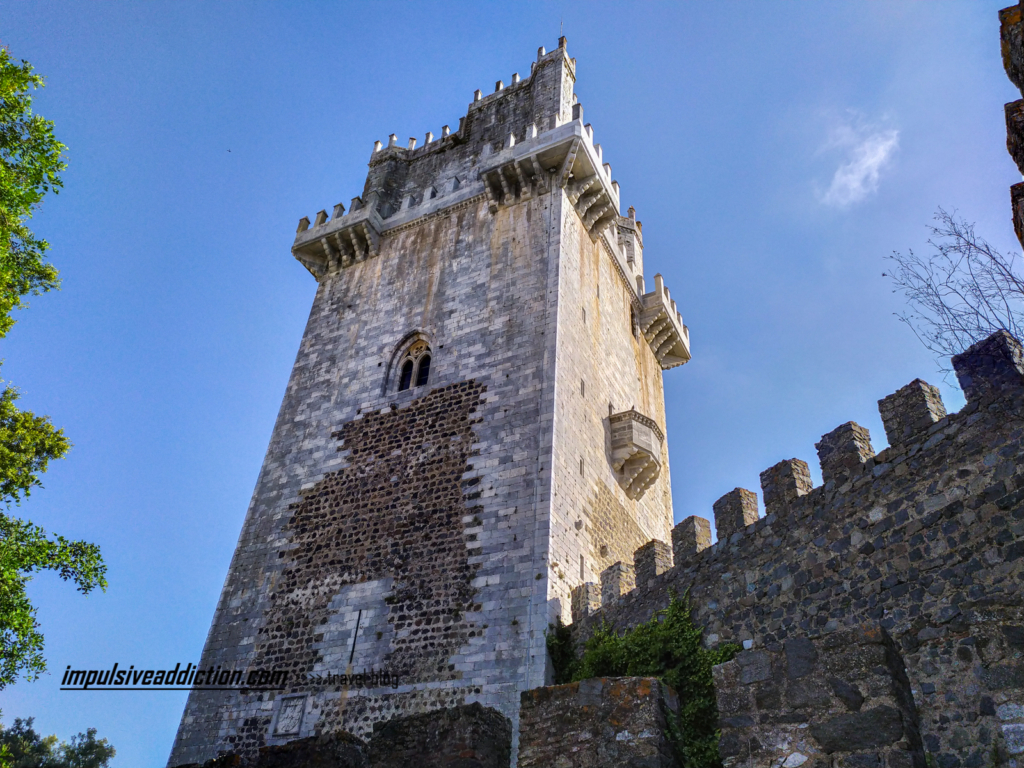
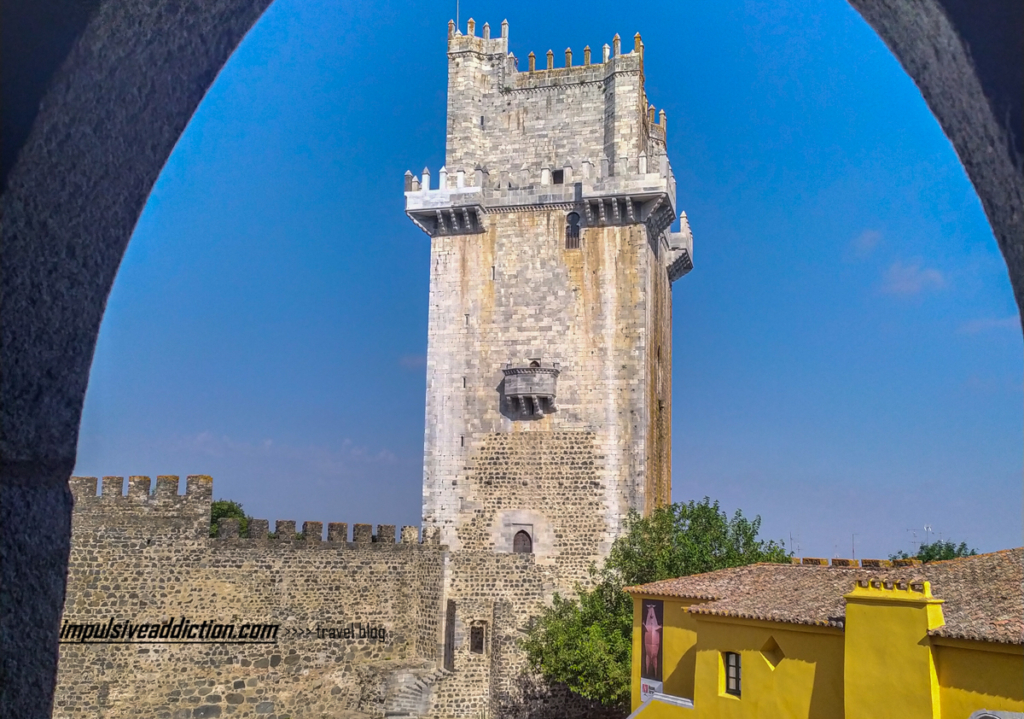
6. Visit Beja Cathedral
It’s right next to the Castle and is the city’s main church: the Church of Santiago Maior.
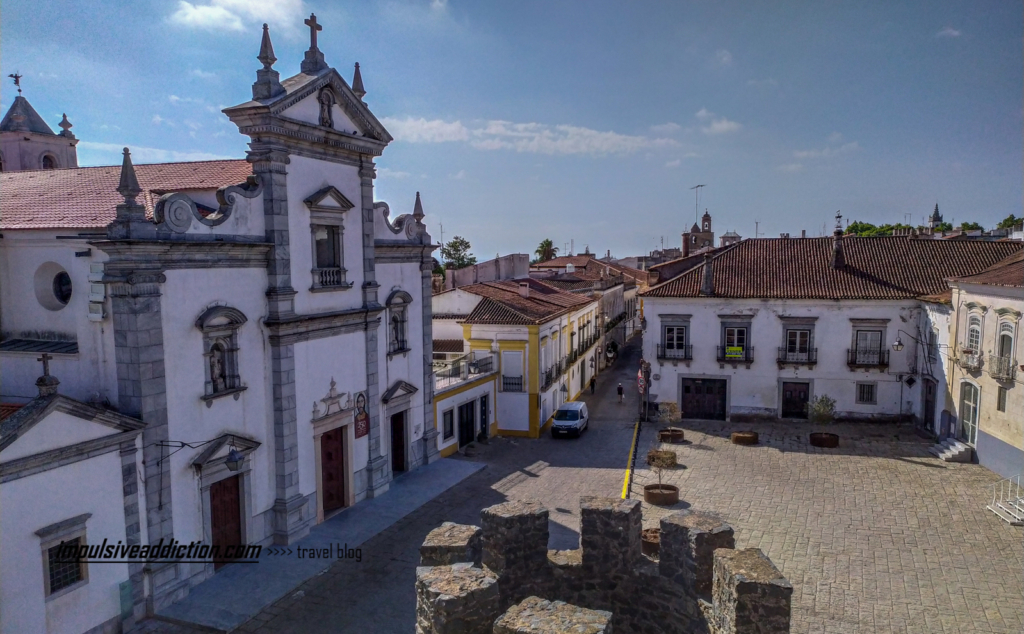
7. Visit Beja Jewish Quarter
In the Jewish quarter, I’d like to point out Rua da Guia, which you’ll walk along in its entirety. When you reach the end of the street, turn left towards Terreirinho das Peças, where you’ll find the Arch of Avis, another of the ancient gates to the walled city. At Terreirinho you have one of the most beautiful viewpoints in the city of Beja.
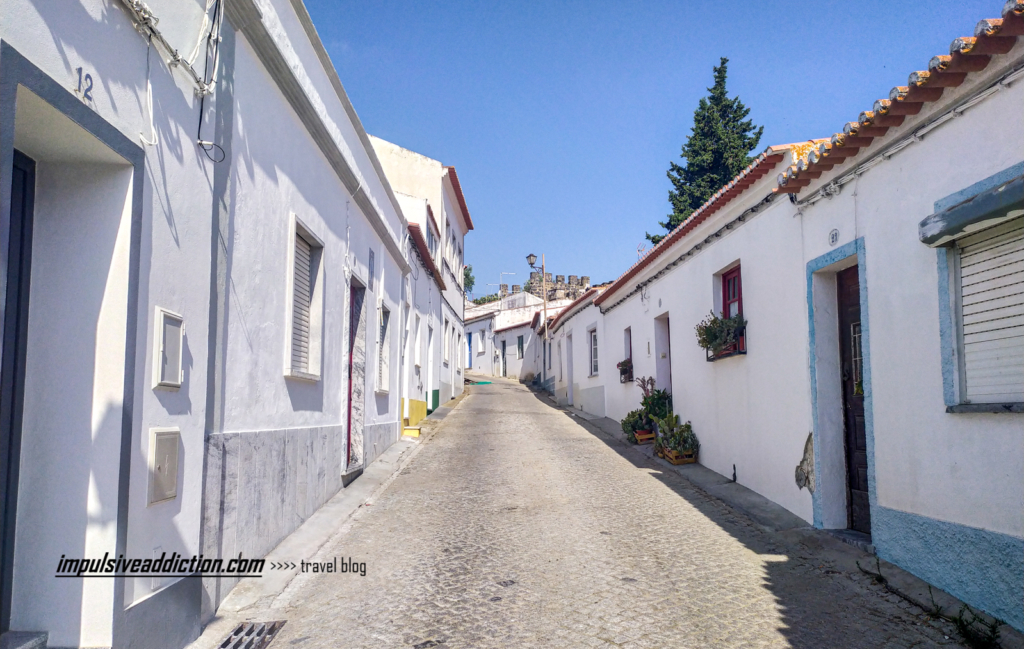
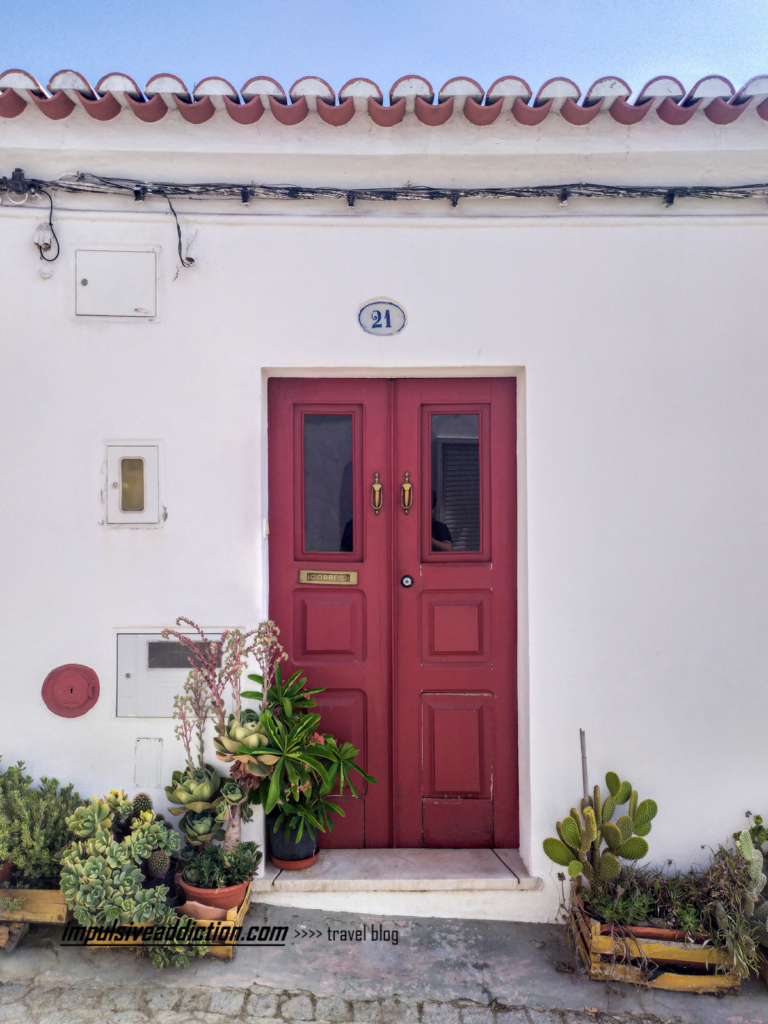
8. Visit Beja’s Mouraria
I took Rua da Muralha, which starts near the Gates of Moura. Optionally, you can take a detour to the Church of Nossa Senhora do Pé da Cruz.
Don’t forget to pass through the Mouraria garden, of course, and then walk along Rua da Mouraria and Rua da Amendoinha until you reach the Church of the Savior.
Next step? Beja Public Garden!
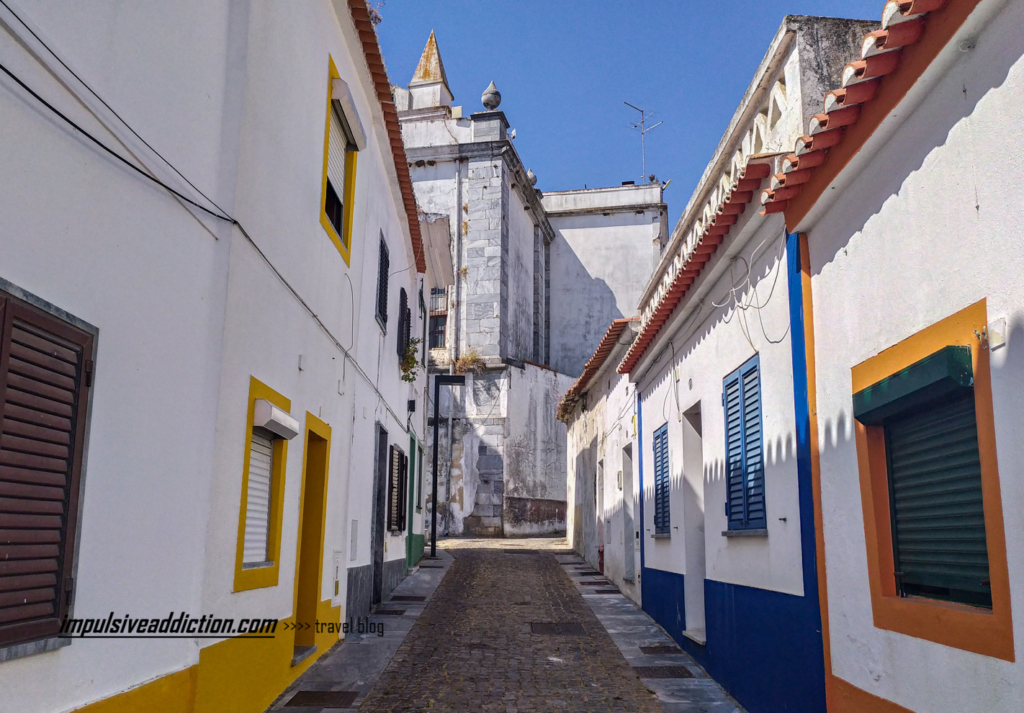
9. Visit Beja Public Garden
Beja’s Public Garden is also known as the Gago Coutinho and Sacadura Cabral Garden. It is a beautiful city park with lakes, a bandstand, fountains, seating areas, trees and many species of plants and flowers.
10. Visit the Convent of Beja and walk along the Gates of Mértola street
Next you’ll find the Convent of Beja, converted into Pousada de São Francisco (accommodation option). Further along you’ll find one of the prettiest avenues in Beja, Rua das Portas de Mértola (Gates of Mértola Street), which when I visited had yellow and blue fabrics shading the many stores. Why not make a quick stop at a pastry shop or café to sample the region’s typical sweets?
Optionally, make a detour to the Beja courthouse garden, and don’t miss the façade of the Caixa Geral de Depósitos building.
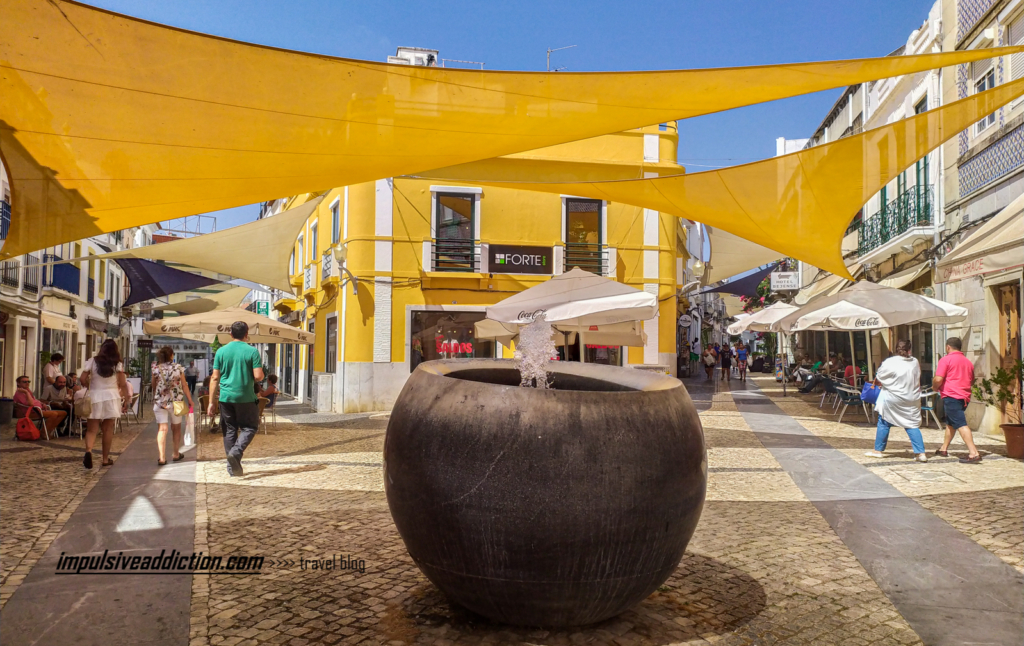
11. Visit some more museums and discover Bordallo II in Beja
You may then visit a couple of other museums in Beja: first the museum on Rua do Sembrano, of which the work by Bordallo II right by the entrance stands out the most; then the museum of Queen Leonor, also known as regional museum of Beja, housed in the former Convent of Conceição.
12. Admire the statue of Queen Leonor next to the Old Convent of Conceição
For me, the convent is the second most fascinating tourist attraction in Beja, due to its architecture, decoration and characteristics. For me, this is the heart of the city.
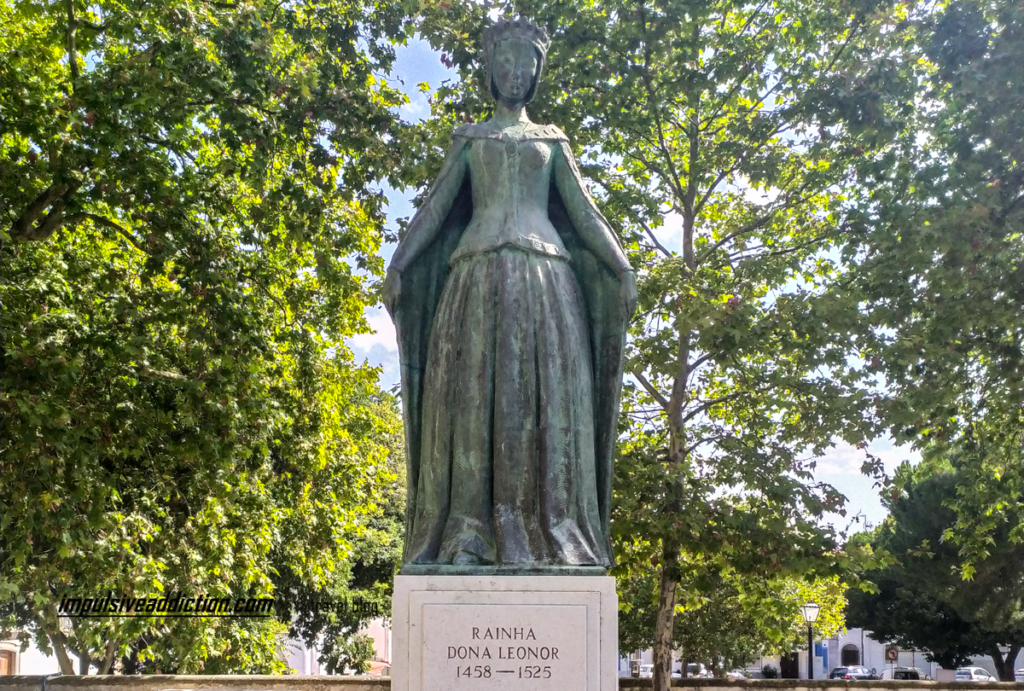
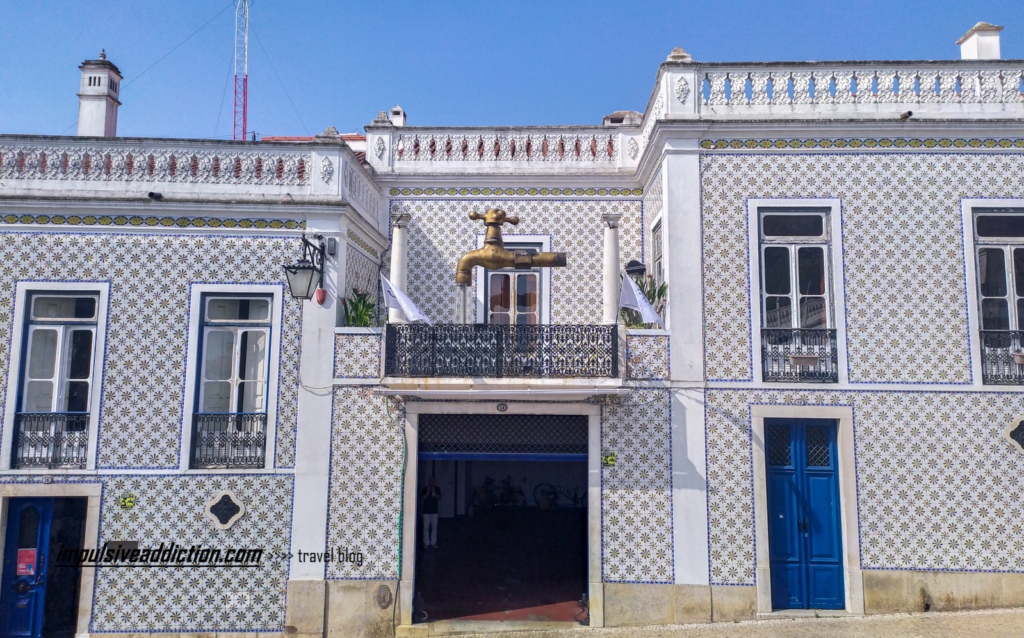
13. Visit the Church of Santa Maria
You’ll love the details of its bell and clock towers and then the decoration inside. The Church of Santa Maria is one of the most interesting in Beja.
14. Walk along Rua Dr. Aresta Branco back to the castle
Finally, before heading to the outskirts of the city of Beja, take a stroll through Rua Dr. Aresta Branco and admire the tiled façades of its various buildings. I really liked it.
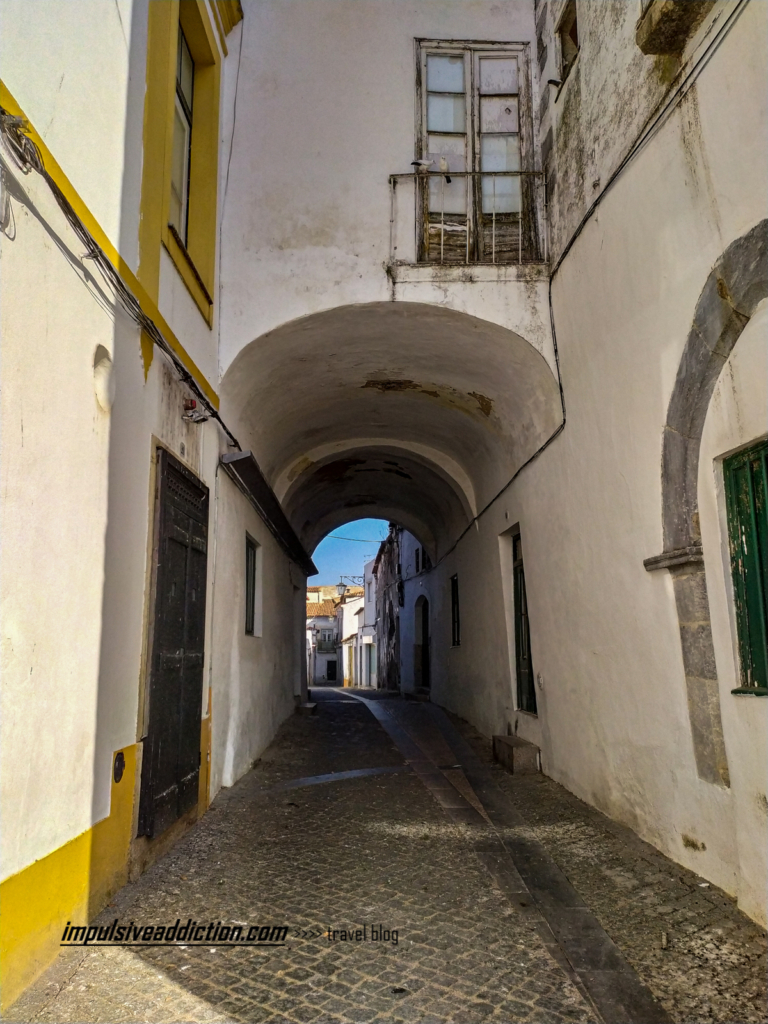
15. Visit the ruins of the Roman Villa of Pisões, on the outskirts of Beja
If you like history, especially from the Roman period, don’t miss a visit to these ruins. They are on the outskirts of the city of Beja and have some interesting sites that will transport you back to antiquity.
16. Visit the Five Kings River Beach
Beja’s river beach is a must-see, as unmissable as the keep. A place I want to return to when I visit this region of the Alentejo again. Enjoy a full afternoon there, at least.
Places to visit in Beja – Description of tourist attractions
All these spots have been recorded on the map I left above in this article. Now I’m going to detail the most important ones with historical details or curiosities that I always like to know when I travel. If you’re interested, read on.
1. Pillory of Beja
Beja’s pillory dates back to the 16th century but has only been in Republic Square since the 19th century. The current construction is not the original, as several pieces have disappeared over time.
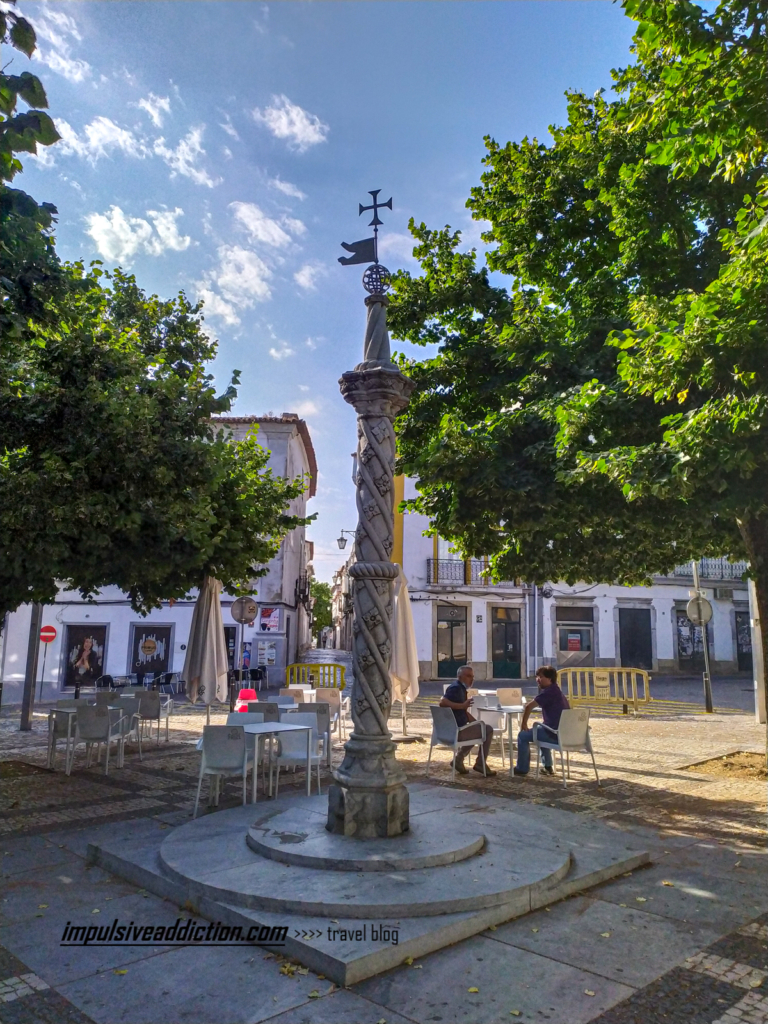
2. Church of Misericórdia in Beja
The curious thing about the Church of Misericórdia is that it was designed to be a slaughterhouse or a kind of butcher’s shop in the city of Beja. Perhaps that’s why it has such a unique and even strange appearance for a church. It was inspired by the Italian architecture of the time, so when it was finished it was decided that it was misused as a slaughterhouse, and it was handed over to Santa Casa da Misericórdia, which converted it to its current function.
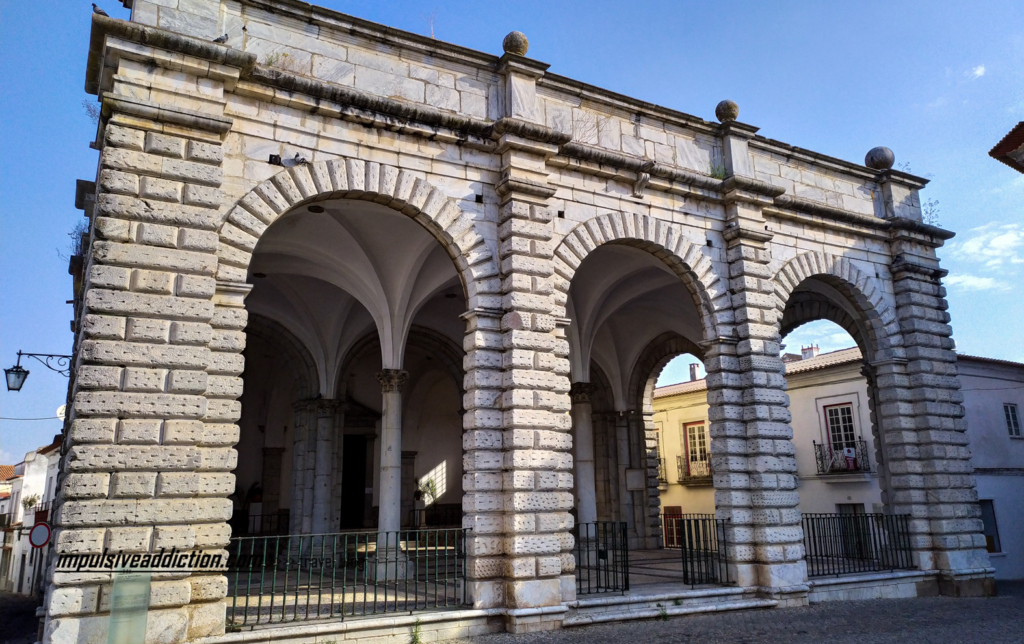
3. Archaeological excavations at Rua da Moeda
You’ll find traces of buildings from the different peoples who occupied Beja in ancient times: the Iron Age, Roman and Muslim occupation, and even more recently.
4. Manueline window (Rua Dr. Afonso Costa)
There’s not much to say: it’s a 16th century Manueline-style window. It is believed to have come from the old Carmo Convent, which was demolished in the 19th century.
5. Museums in Beja
There are several of them scattered around the city of Beja. Here’s a description of the ones I’ve mentioned throughout my suggested itinerary.
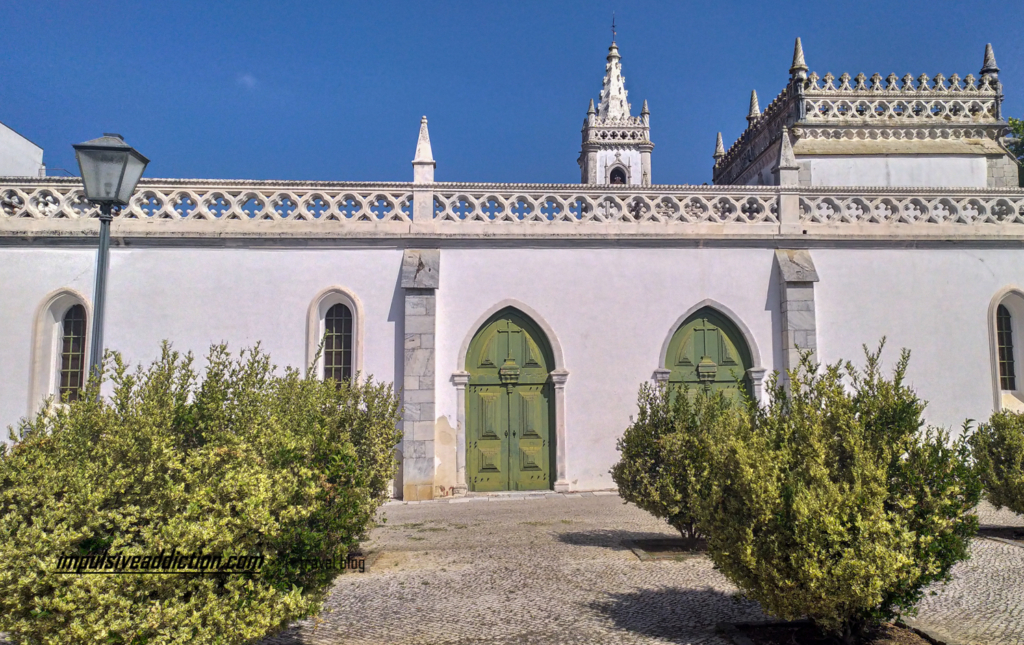
Episcopal Museum of Beja in the Church of Nossa Senhora dos Prazeres
The Church of Nossa Senhora dos Prazeres was built in the 17th century next to one of the gates in the wall (Arch of Prazeres). The Episcopal Museum has been located in this church since 2004, but it has existed in Beja since 1892. Inside you’ll find exhibitions of sacred art of various kinds, such as paintings and sculptures.
Beja Pharmacy Museum in the old Misericórdia hospital
The Hospital of Nossa Senhora da Piedade, as it is also known, dates back to the end of the 15th century. Initially, it was a place of support not only for the sick but also for pilgrims.
Beja Regional Museum
Beja Regional Museum is also known as Museum of Queen Leonor. This is the main museum in the city of Beja and is located in the former Convent of Nossa Senhora da Conceição, for me one of the most beautiful buildings in the city. Here you’ll find remarkable collections of paintings, goldsmiths, tile panels, an archaeology section, and you can visit the convent church and cloisters.
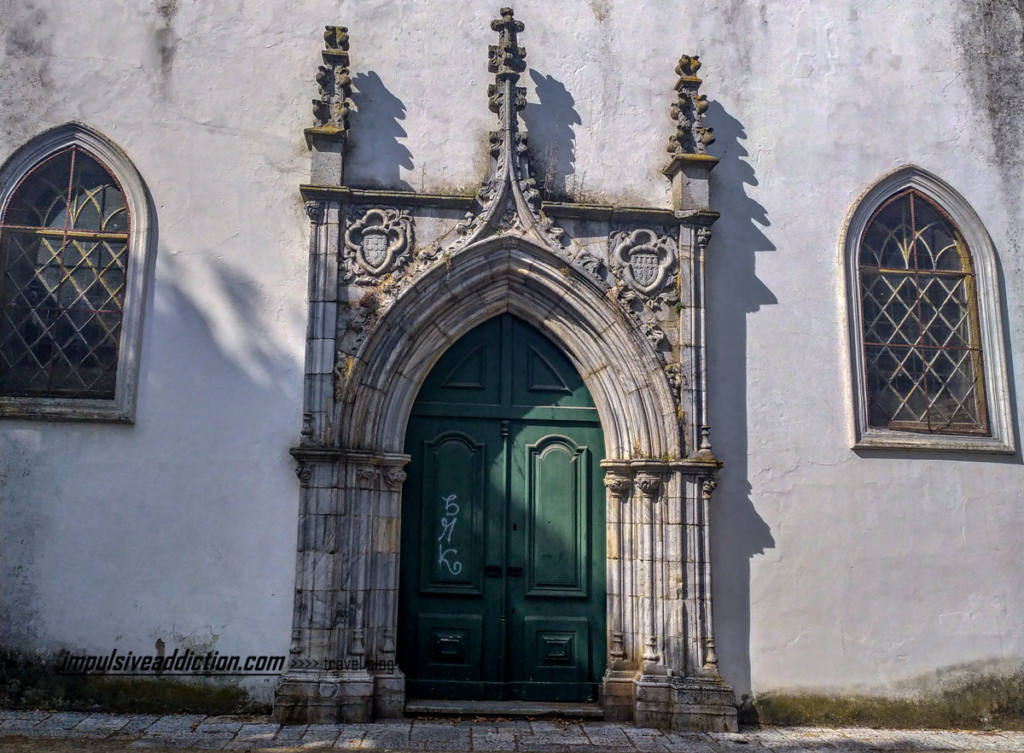
Visigothic section of Beja Regional Museum in the Church of Santo Amaro
Beja is considered the Capital of Visigothic Art in Portugal because of the collection you can visit at this museum: it’s the most significant in the country, with pieces dating from the 4th to the 8th centuries. And don’t overlook the fact that it’s housed in the Church of Santo Amaro, built on the site of Beja’s old Paleo-Christian church.
Museum Center of Rua do Sembrano and Portu-galo de Bordallo II
In Rua do Sembrano there is an archaeological excavation site where remains dating back to the copper age have been found. Of particular note are the glass platforms built above the ruins, which allow visitors to explore them perfectly.
The finds from these excavations can be seen on display, allowing you to learn more about the history of the city of Beja since ancient times. Next to the museum you’ll find one of Bordallo II’s famous murals.
Jorge Vieira Museum
The museum is located in the former Governor’s House of Beja Castle. Here you can see works by the sculptor and artist Jorge Vieira, which he donated to the city.
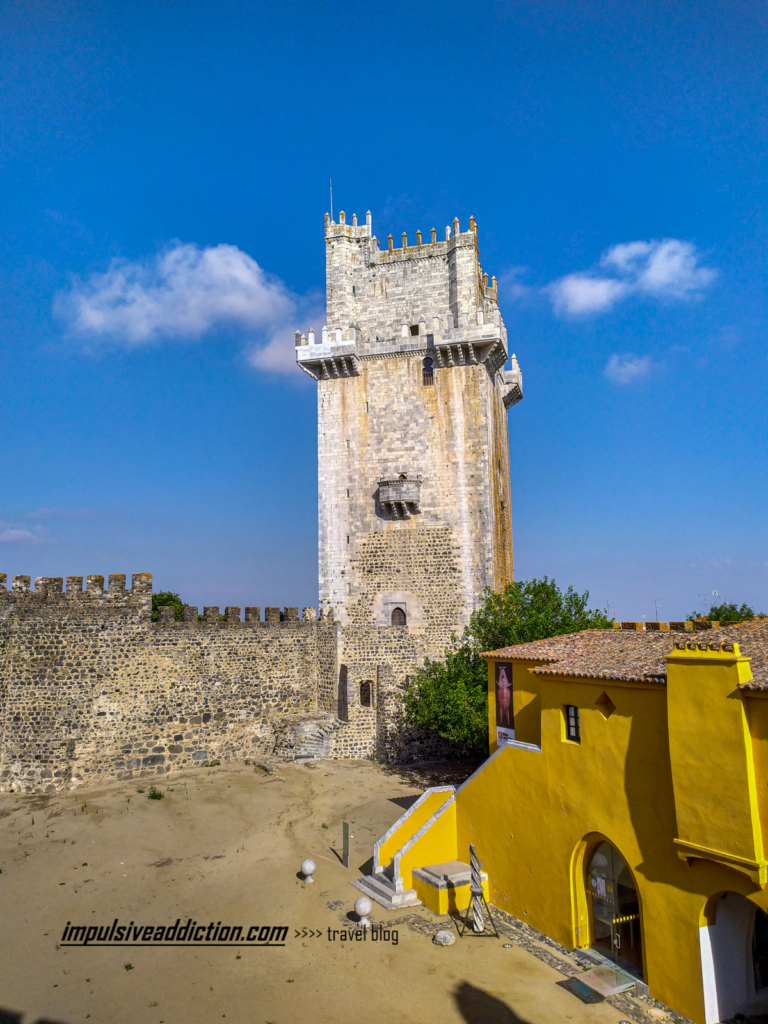
Botanical Museum of Beja School of Agriculture
It is a free admission museum with exhibitions on what has been discovered in the world of botany and plants, both at home and abroad. The focus is on the interaction between man and nature.
6. Chapel of St. Stephen
It is one of the oldest churches in the city, but it didn’t always have this function (it was once a simple hayloft and granary in Beja). The Chapel of St. Stephen dates back to the 13th century, although it was remodeled and restored in the 18th century.
7. Prazeres Arch
Entrance to the walled city of Beja, built between the late 16th and early 17th centuries. Through it you quickly reach the Republic Square.
8. Chapel of Santo André
There is some Arab influence and Mudejar style in the construction. The building in question dates from the 15th/16th century, but it is believed that a church has existed here since the Christian reconquest.
9. Castle of Beja and Keep
The Gothic-style keep of Beja Castle is the tallest in the country at around 40 meters high. The castle began to be built in the 13th century, after the reconquest of Beja from the Muslims. It is possible to climb the walls that surround the castle’s square of arms, and also to the top of the tower, from where you can reach one of the best viewpoints in Beja.
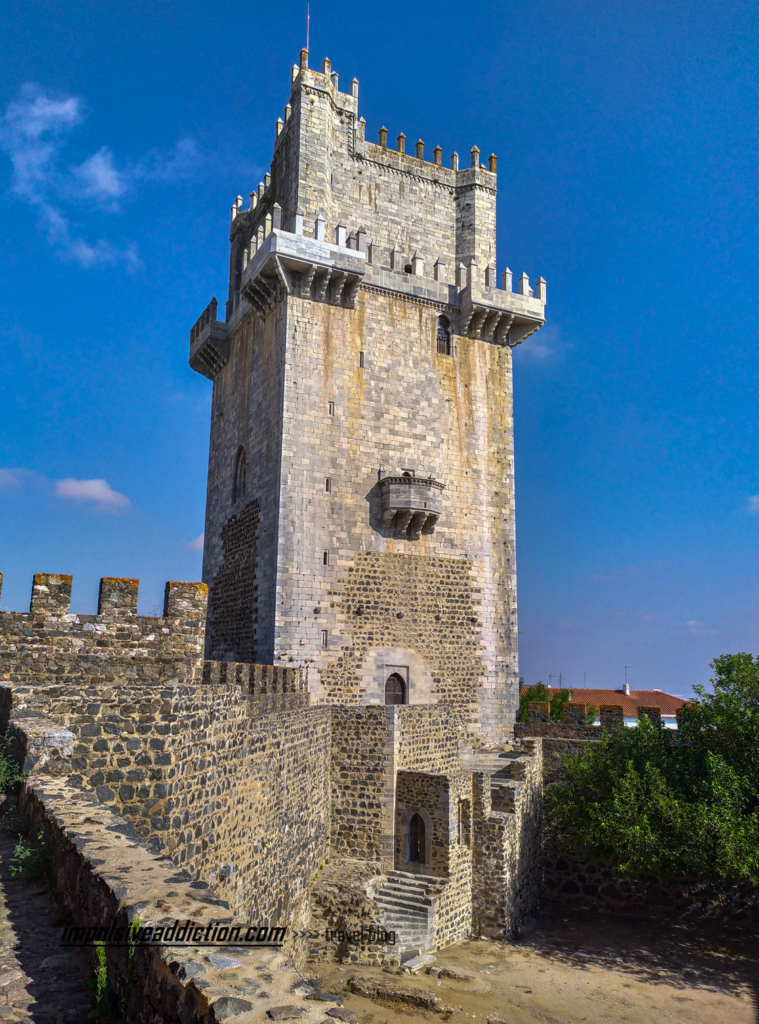
10. Roman Arches of Beja: Gates of Évora, Avis, Mértola and Aljustrel
Of the four Roman gates in the city of Beja, only two survive: the Gates of Évora (near the Castle) and the Gates of Avis (near Terreirinho das Peças). They date back to the 3rd or 4th century AD, despite being 20th century reconstructions. It is believed that the Mértola Gates, which no longer exist, were the largest and main ones in the city of Beja.
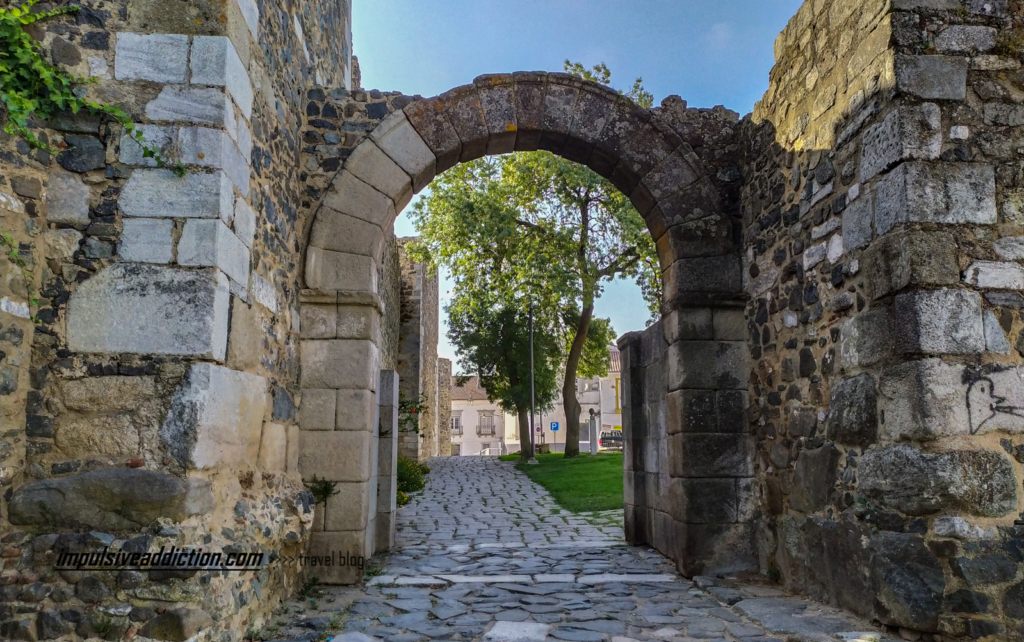
11. Beja Cathedral
It is a church built in the 16th century on top of another church dedicated to St. James. Hence the name Church of Santiago Maior in addition to Cathedral of Beja.
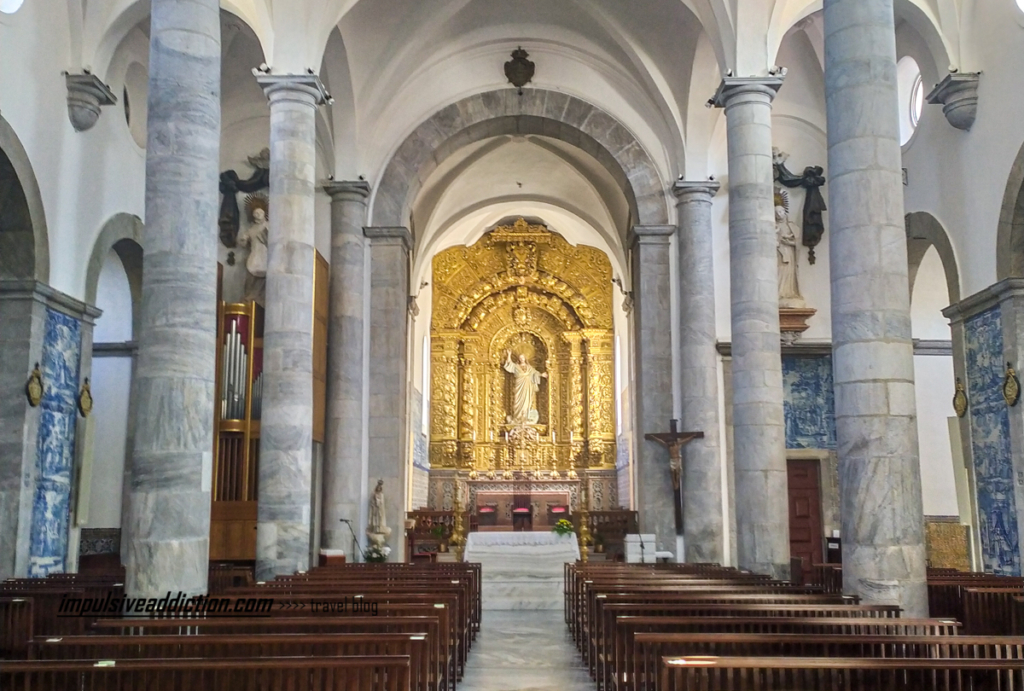
12. Gates of Moura in Beja
Arch in Beja consecrated to St. John the Baptist.
13. Mouraria and Jewish quarter of Beja
Typical Alentejo neighborhoods where people of Muslim and Jewish origin were concentrated. My favorite was the Jewish Quarter.
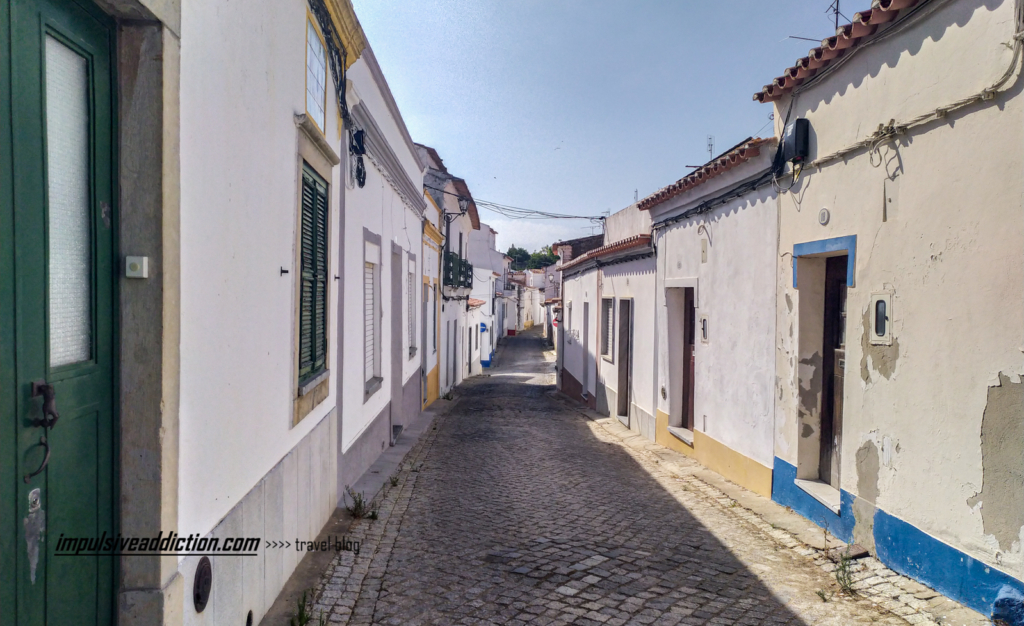
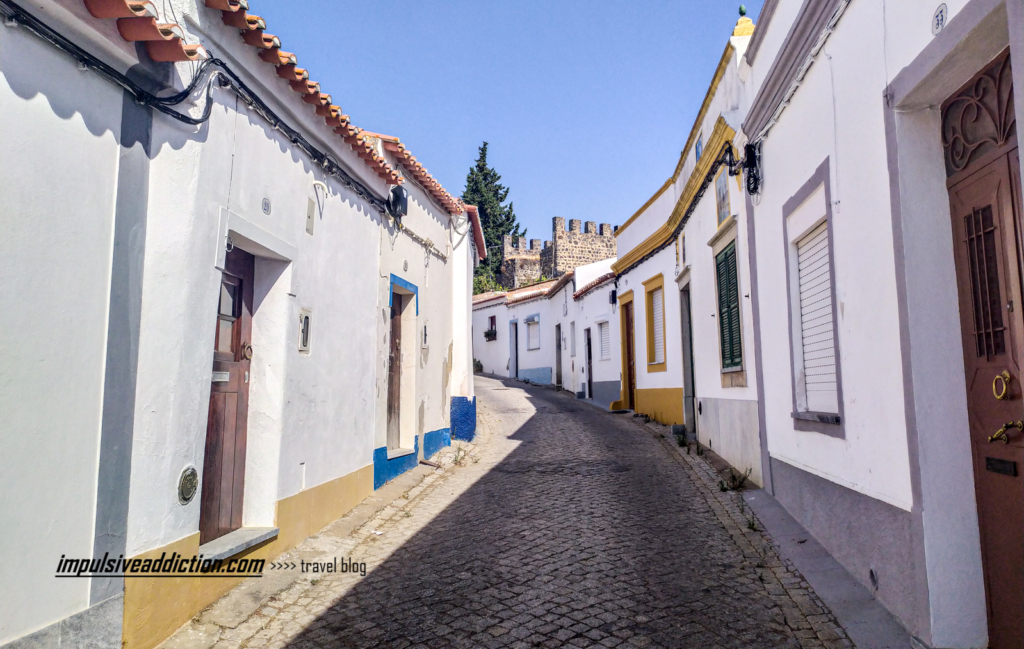
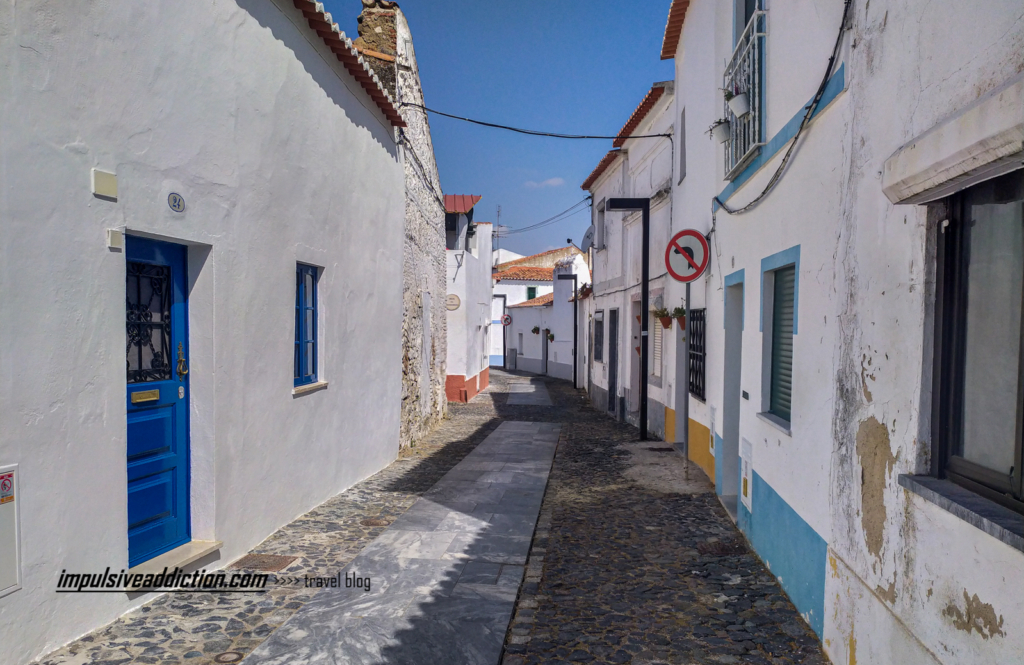
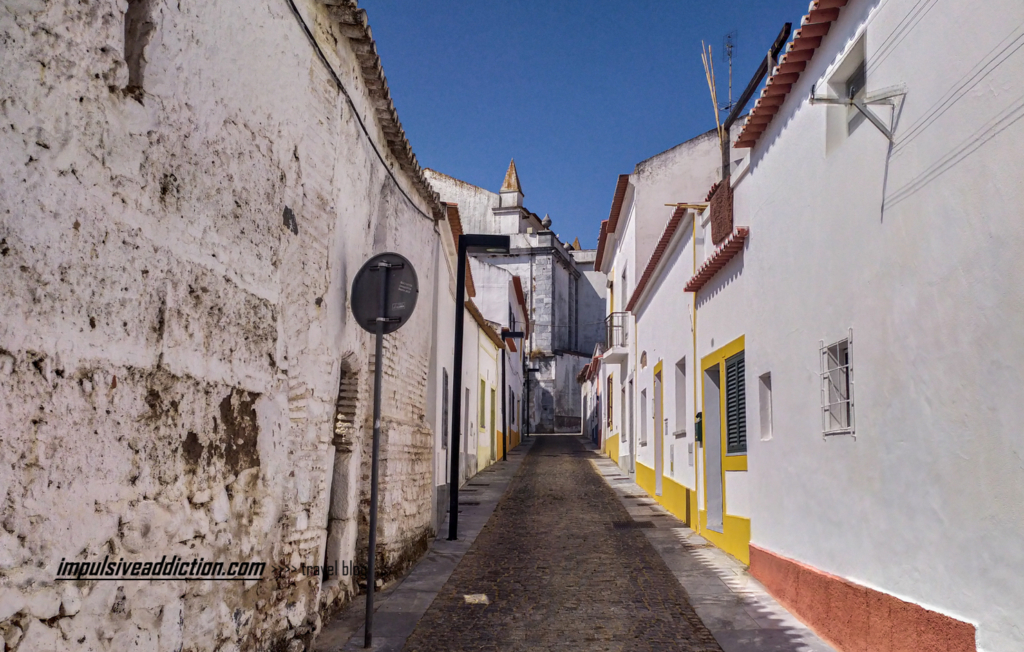
14. Church of Nossa Senhora de ao Pé da Cruz
Baroque church built in the 17th century outside the walled enclosure. It is believed to have replaced another from the 15th century.
15. Church of the Savior
It is believed to have existed since the 13th century and played an important role in the conversion of the Arab people of Beja due to its proximity to Mouraria. It was the Cathedral of Beja until 1922.
16. Beja Public Garden
It is also called Gago Coutinho and Sacadura Cabral Garden and has existed since the 19th century.
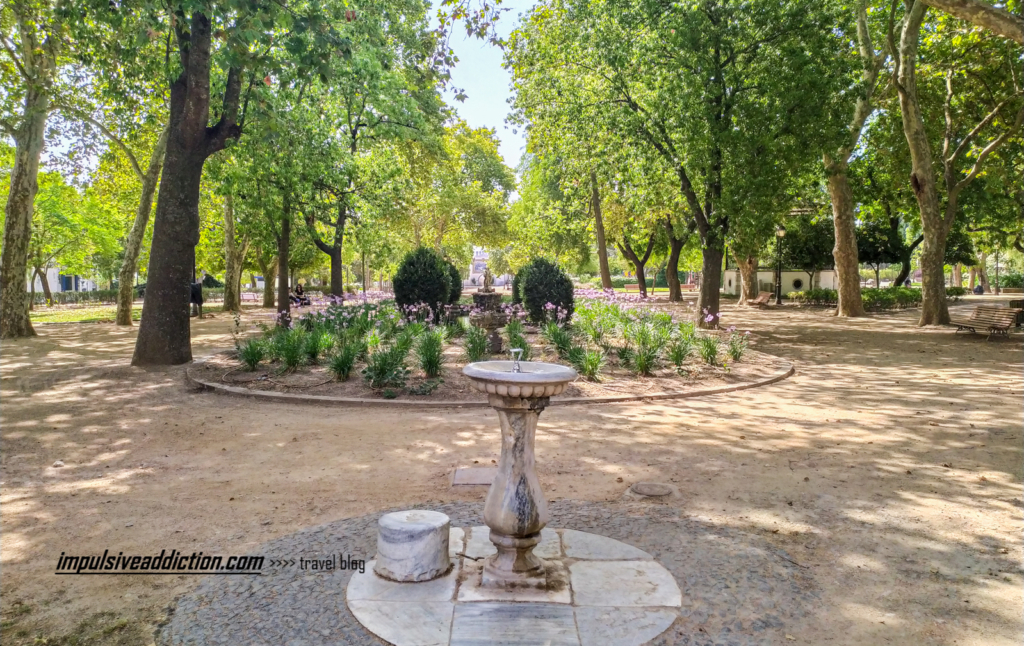
17. Convent of San Francisco
Franciscan convent dating back to the 13th century, of which I would highlight the Hall of Tombs and the cloister.
18. Statue of Queen Leonor
The statue of the queen can be found next to the museum of the same name and the convent of Nossa Senhora da Conceição. Dona Leonor was born in Beja in the 15th century and was considered the “princess most perfect” for her many virtues and acts of mercy towards the people.
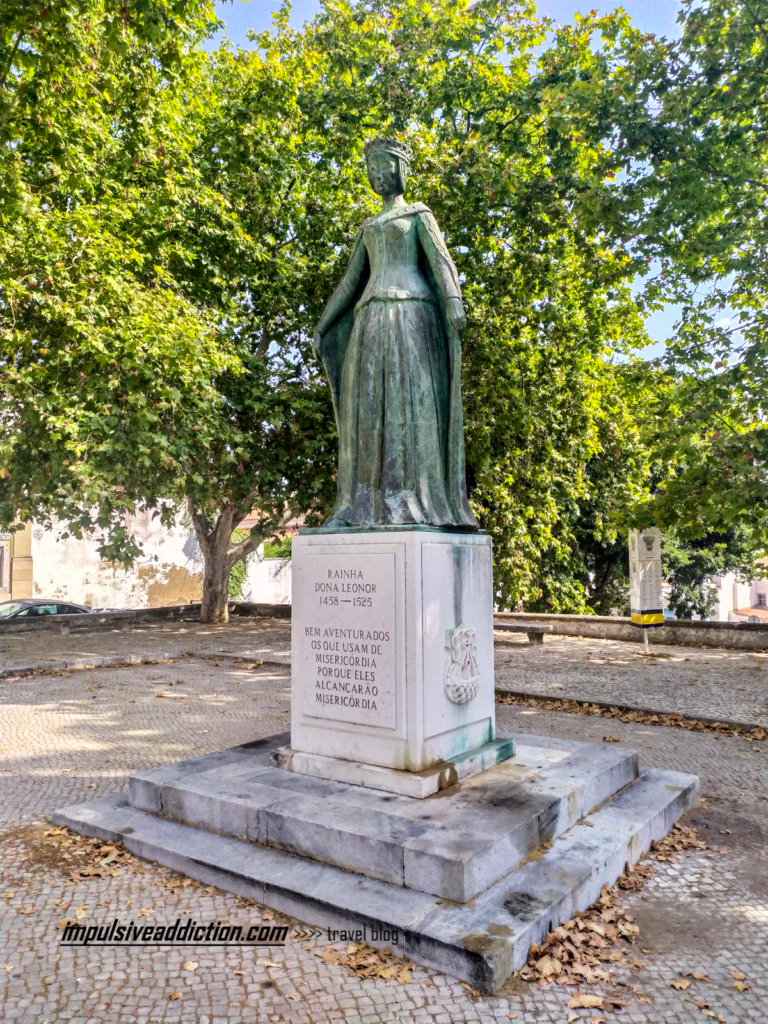
19. Church of Santa Maria
It is believed to have been built over a Muslim mosque and is one of the oldest in Beja.
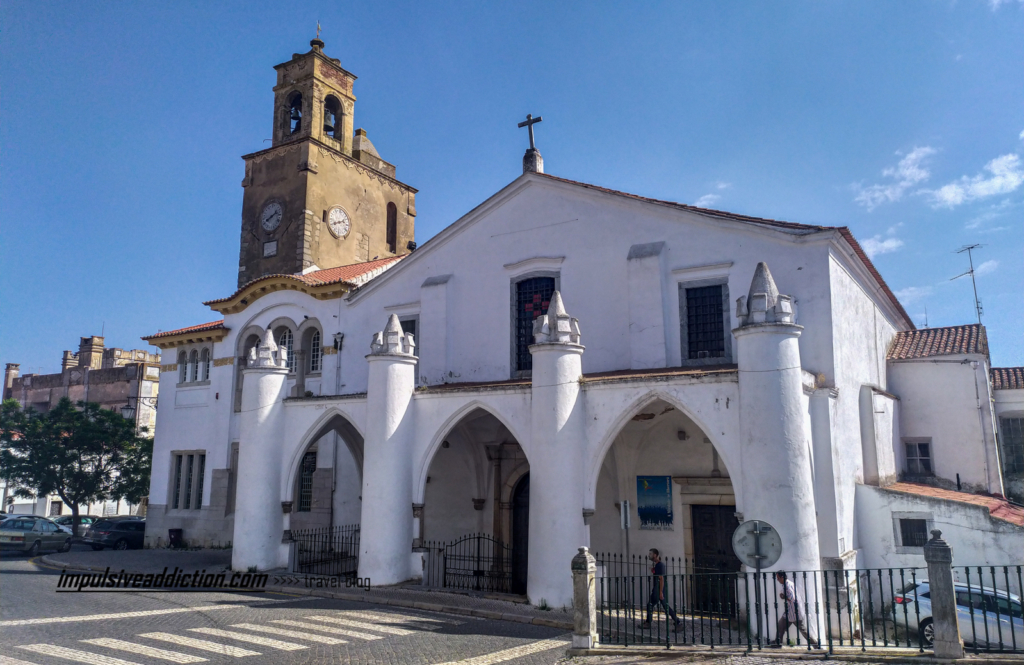
20. Maldonados Palace
A 16th-century palace that once served as Beja’s lyceum and student residence.
21. Passo da Rua da Ancha
One of the steps of the Via Crucis, from the 17th century, which still survives in Beja on the façade of a building in Rua da Ancha.
22. Roman Villa of Pisões
Although only part of the villa is uncovered, it is clear that it was occupied between the 1st and 4th centuries AD, and that it served an agricultural function in the region of Pax lulia (the name of Beja in Roman times). I would definitely highlight the surviving traces of its mosaics.
23. Five Kings River Beach in Beja
The river beach was inaugurated in July 2020 at Five Kings Reservoir, less than 10km from the center of Beja. It is an accessible beach for people with reduced mobility, has a nautical center where you can rent a canoe or a paddle, has a support bar, toilets, and a first aid station. There are also lifeguards during the bathing season. It’s undoubtedly a Beja attraction not to be missed in the summer.
Things to do in Beja surroundings?
Focus on the Alentejo municipalities around Beja. There are plenty of tips below for excellent locations in the region.
1. Visit Viana do Alentejo
Viana do Alentejo has a very special pentagonal-shaped castle. Don’t forget the nearby Sanctuary of Nossa Senhora de Aires.
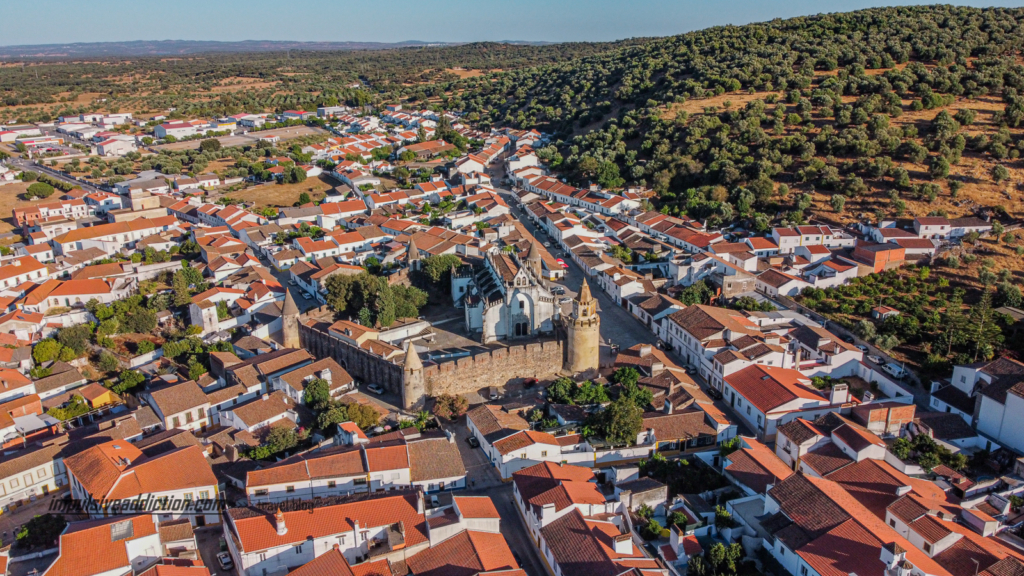
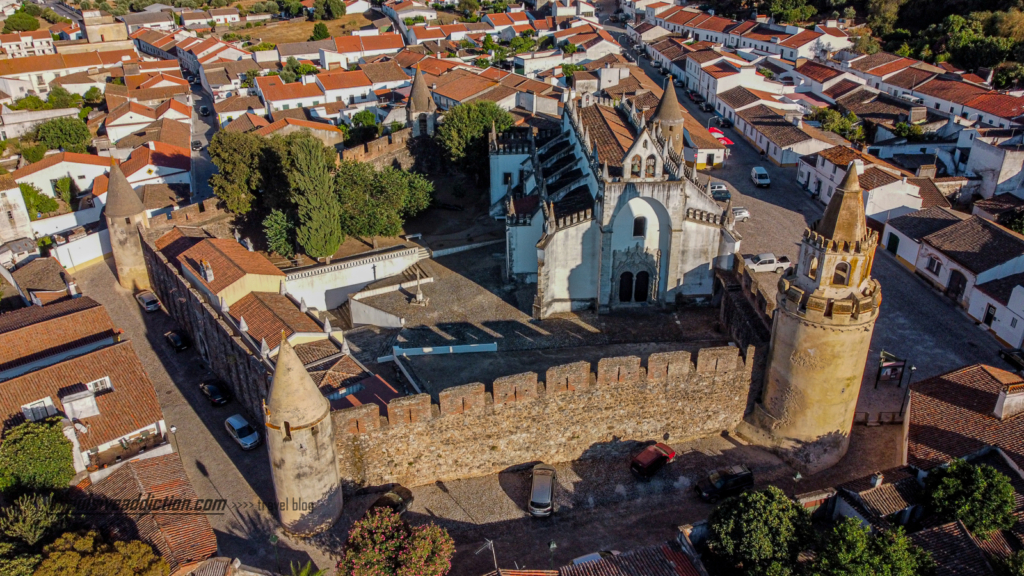
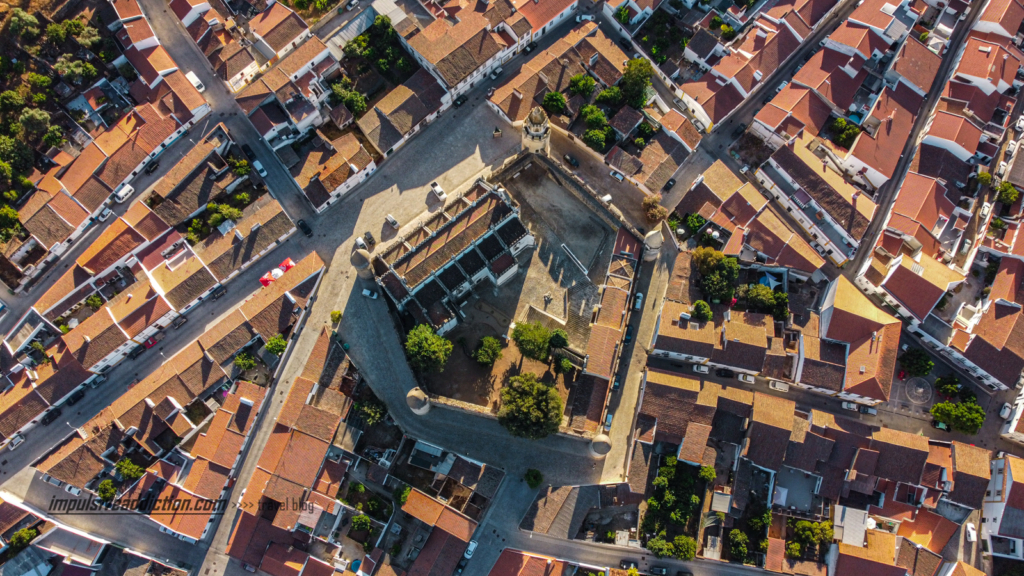
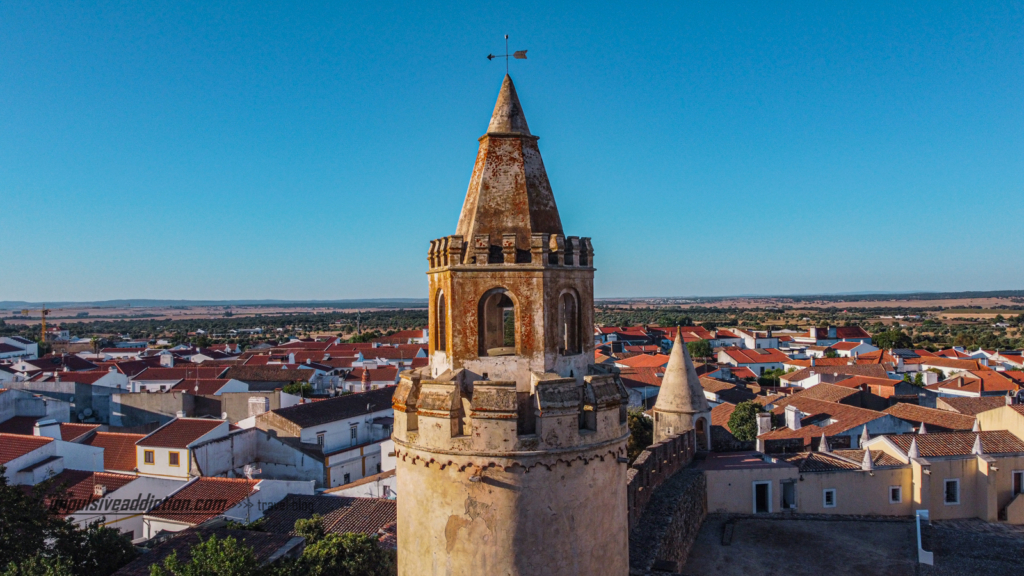
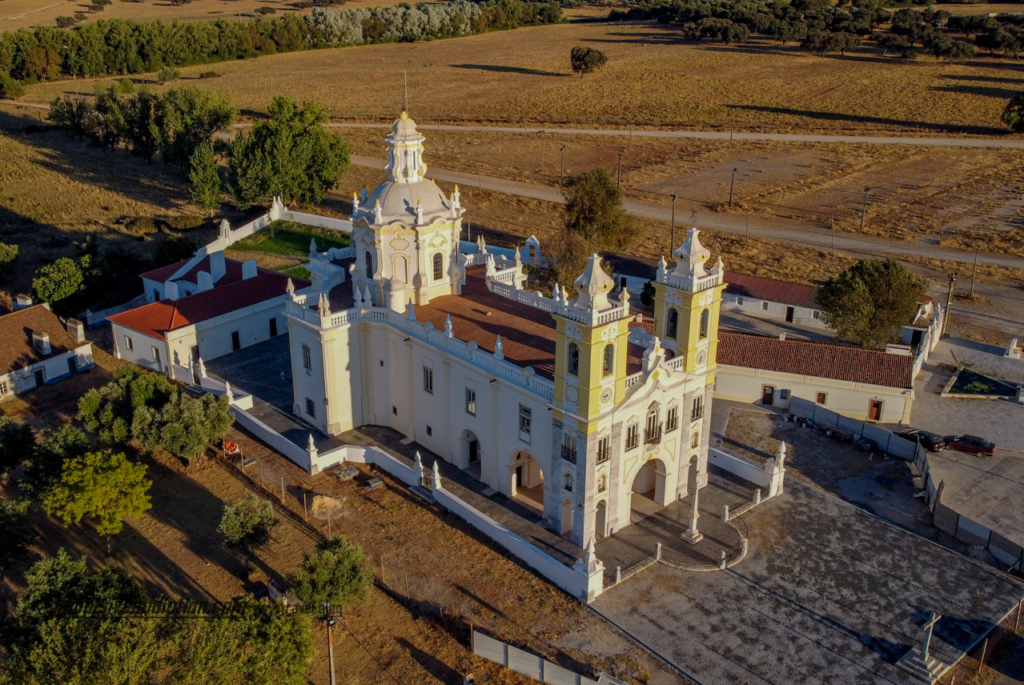
2. Touring the Alqueva Lake
As for the Alqueva region, it offers the chance to explore Europe’s largest artificial lake. If it’s summer, there’s no shortage of activities to do, from boat trips and water sports to enjoying the river beaches. There are several municipalities in Alentejo to discover around it, including Reguengos de Monsaraz, Mourão, Moura, Portel and Alandroal.
The highlight is the walled town of Monsaraz, one of the most picturesque in the country, with phenomenal views of the great lake. You can also visit the traditional potteries of São Pedro do Corval and the river beaches of Monsaraz, Mourão and even Portel. Moura, on the other hand, stands out for its flowery streets. In Alandroal you’ll be fascinated by the Juromenha Fortress!
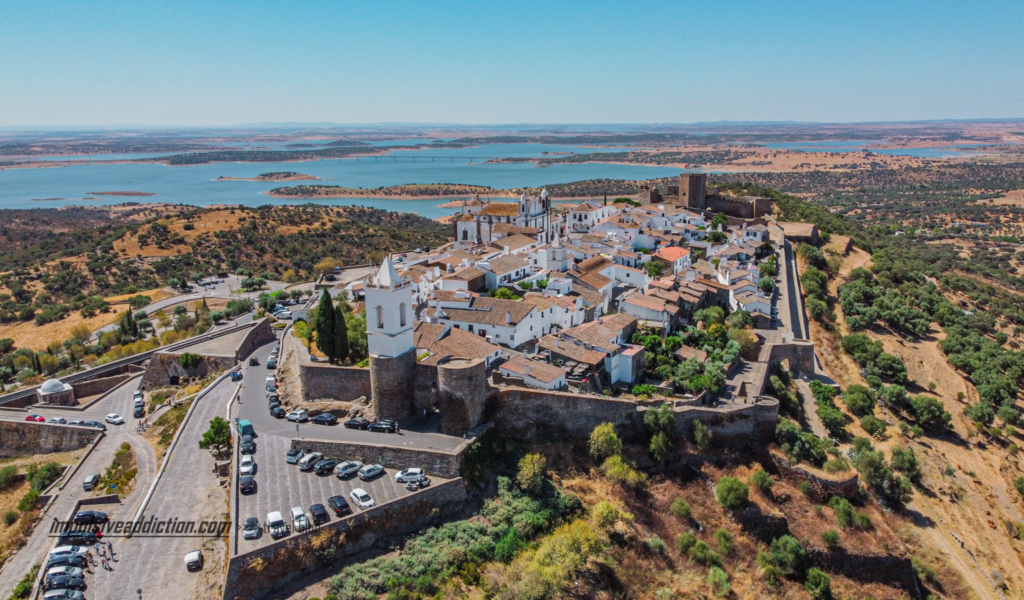
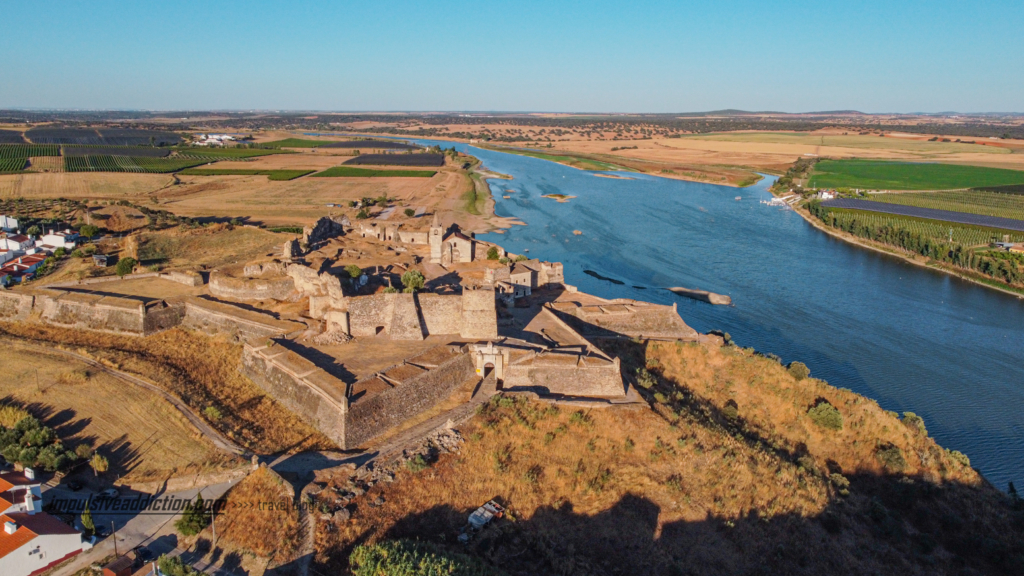
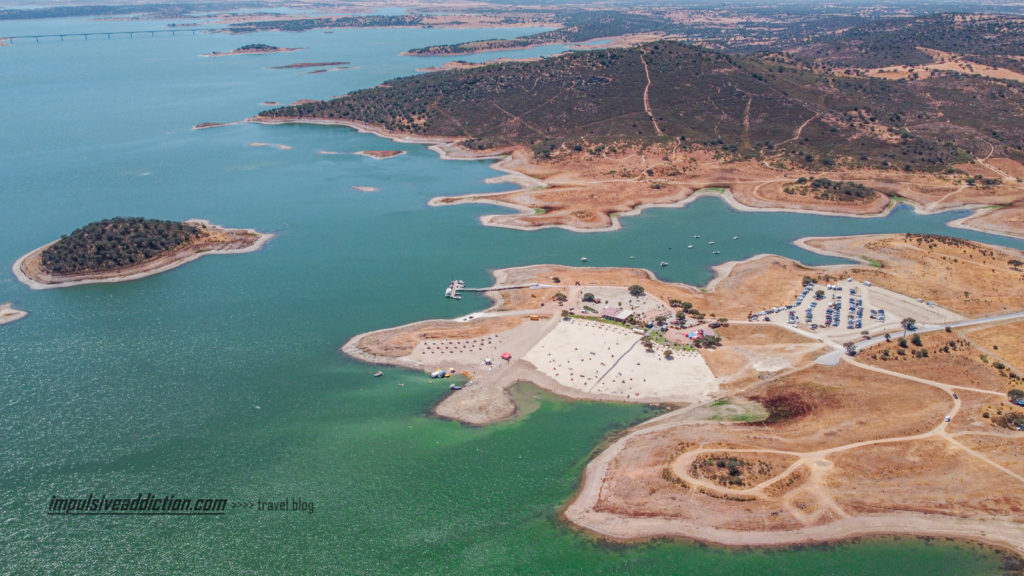
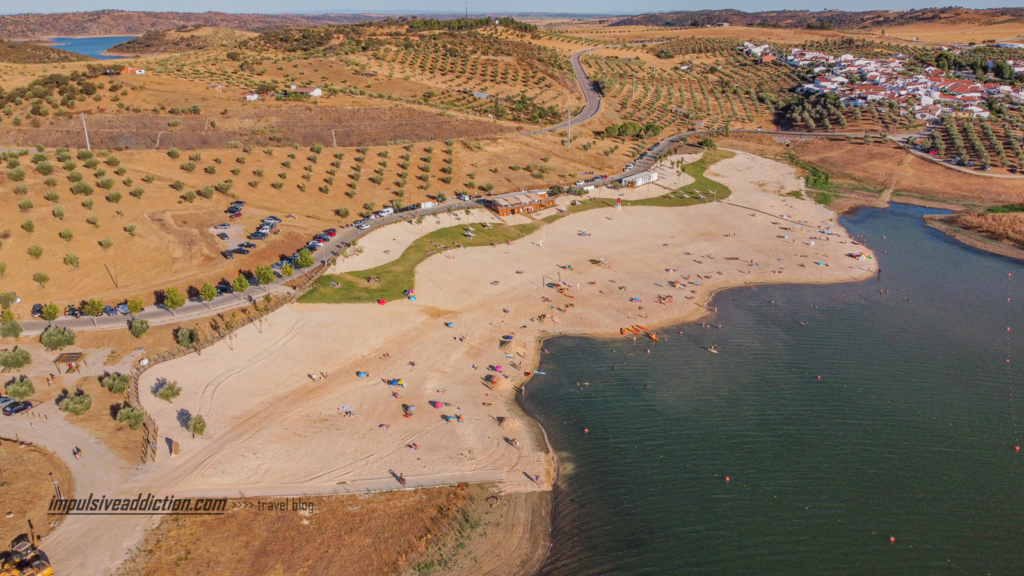
3. Touring the Guadiana Valley
In the case of Guadiana Valley, it includes the municipalities of Mértola and Serpa, both in the district of Beja. We’re talking about a less touristy part of the country, but no less interesting and historic.
In Mértola you’ll find a very strong heritage from the time of the Arab occupation of the territory, and I also recommend that you head to Mina de São Domingos to visit its abandoned mining park, with some of the most surreal scenery to be found in Portugal. Don’t forget the fabulous Pulo do Lobo, a natural monument of excellence on River Guadiana.
In Serpa, on the other hand, the walls, castle and aqueduct stand out. It’s a beautiful destination, but I’m sure Mértola will fascinate you more! 😉
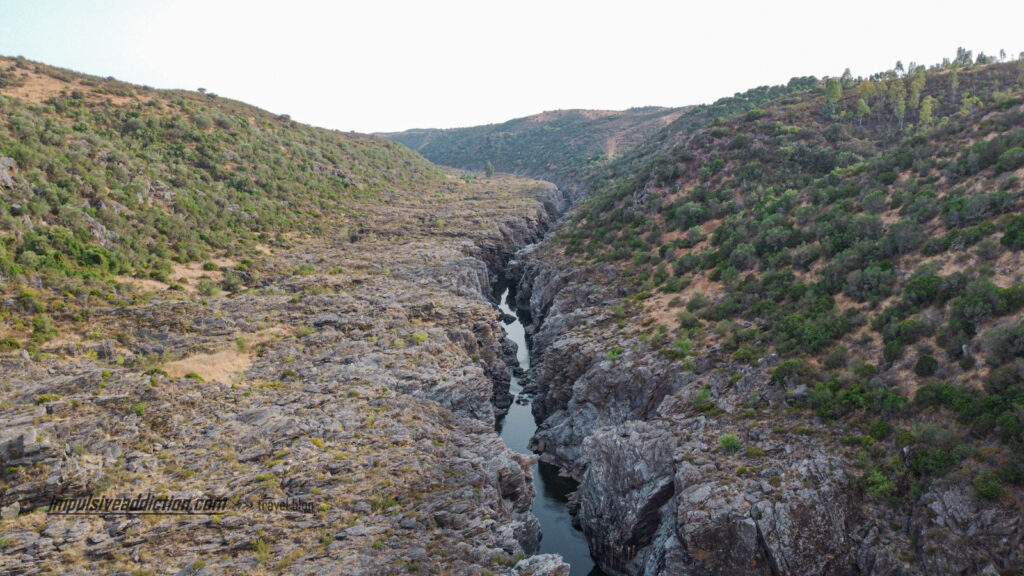
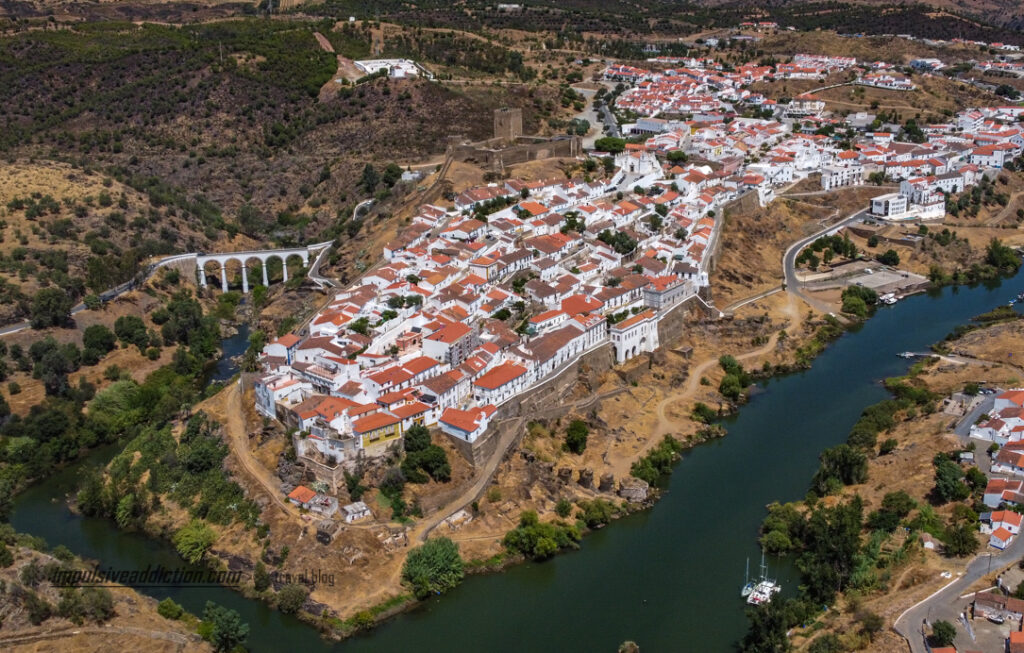
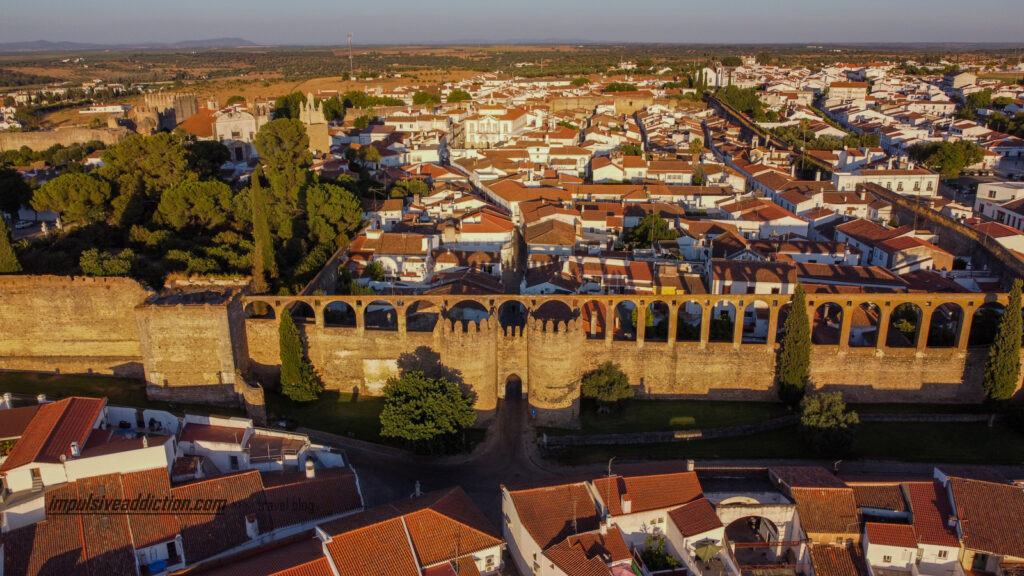
4. Visit Aljustrel
Pass through Aljustrel and climb up to the Maralhas Windmill viewpoint and also to the top of the hill where the Church of Nossa Senhora do Castelo stands. There you’ll find some of the best views in Lower Alentejo.
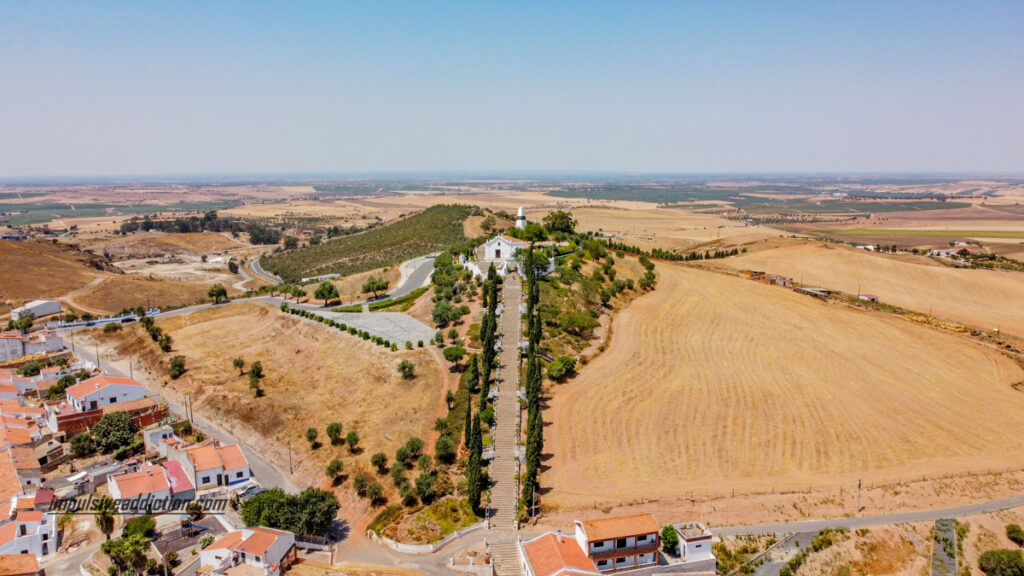
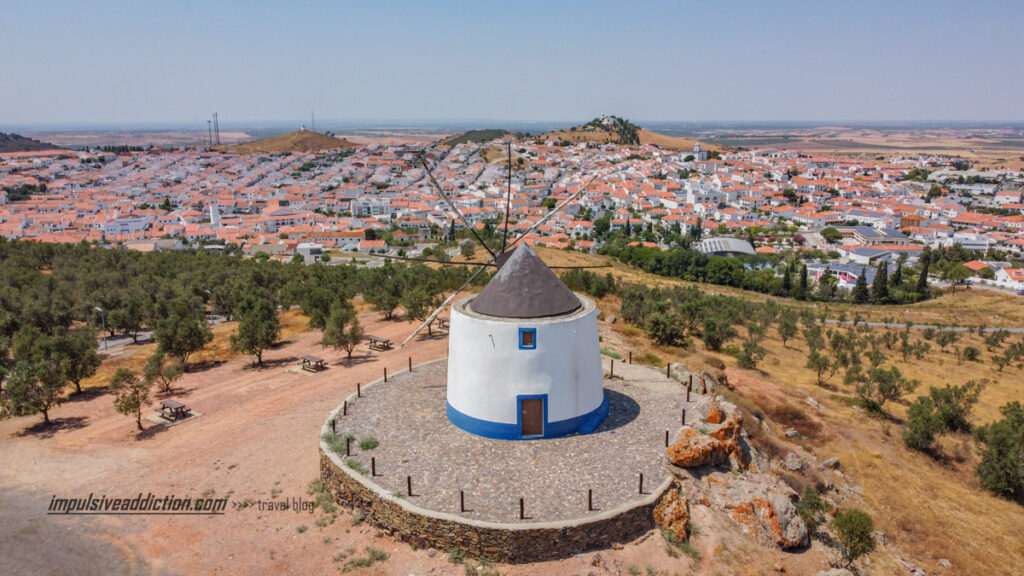
5. Visit Castro Verde
In Castro Verde you can visit the lucerne museum (oil lamps used by the Romans), the Church of Nossa Senhora dos Remédios, and the Royal Basilica of Nossa Senhora da Conceição with an altar covered in gilded wood carvings and tiles with images of the Battle of Ourique. It is said that this battle took place somewhere in this region, probably near the now existing Chapel of São Pedro das Cabeças.
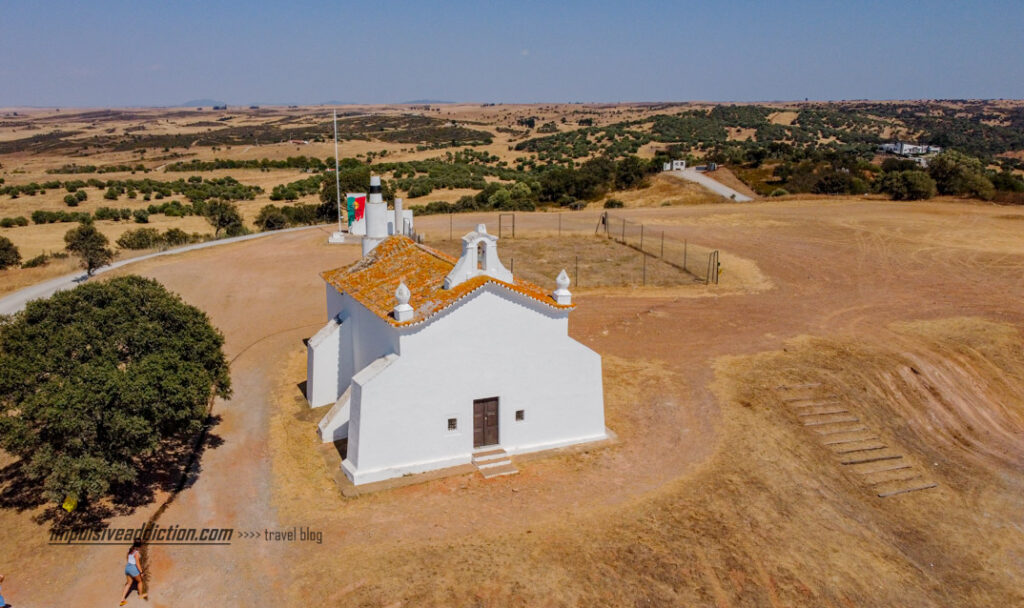
6. Visit other regions of Alentejo
- You can also continue on to Évora, the capital of Central Alentejo. Visiting Évora is undoubtedly a priority for anyone getting to know this region of the country!
- You can also visit the coast of Odemira and Sines, including beaches such as Zambujeira do Mar, Vila Nova de Milfontes and Porto Covo. There are many other magnificent beaches on the coast, some of them deserted, and always with beautiful cliffs.
Other Itineraries and Travel Guides in Portugal
- N2 Portugal Road Trip Itinerary
- Madeira Itinerary and Travel Guide
- São Miguel Itinerary and Travel Guide (Azores)
- Terceira Itinerary and Travel Guide (Azores)
- Pico Itinerary in Azores
- Faial Itinerary in Azores
- Minho | Northern Portugal Itinerary
- Porto Itinerary and Travel Guide
- Things to do In Braga (Minho)
- Things to do in Guimarães (Minho)
- Things to do in Viana do Castelo (Minho)
- Peneda Gerês National Park Itinerary
- Douro Valley Itinerary
- Trás-os-Montes Itinerary
- Things to do in Bragança
- Montesinho Natural Park Itinerary
- Douro International Natural Park Itinerary
- Things to do in Aveiro
- Things to do in Coimbra
- Things to do in Leiria
- Things to do in Fatima
- Things to do in Nazaré
- Things to do in Peniche
- Things to do in Évora (Alentejo)
- Algarve Road Trip Itinerary
- Things to do in Lagos (Algarve)
- Things to do in Portimão (Algarve)
- Things to do in Faro (Algarve)
- Things to do in Tavira (Algarve)
I hope you enjoyed this article with things to do in Beja. Have a nice time in my country and visiting Lower Alentejo! 😉
